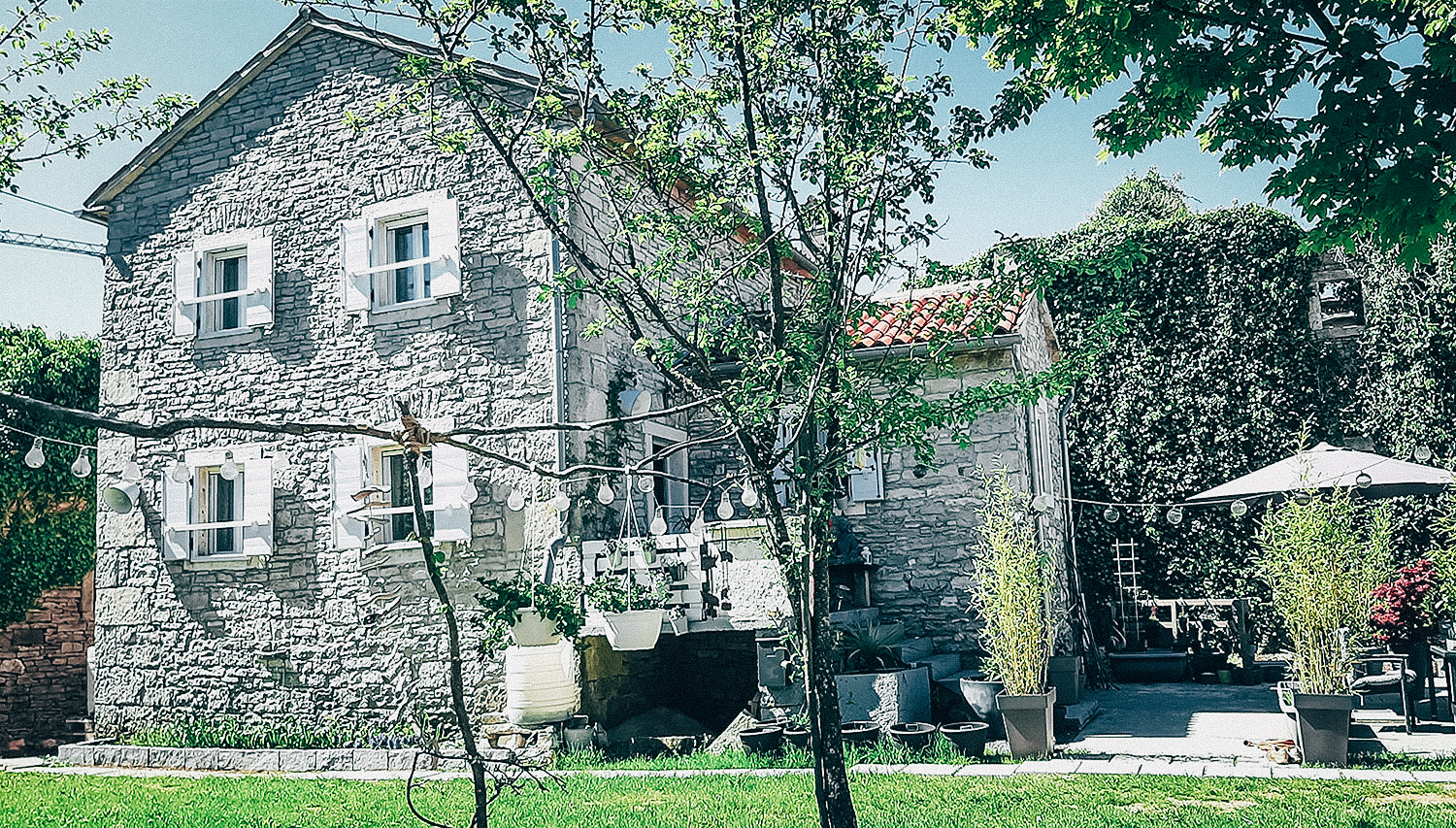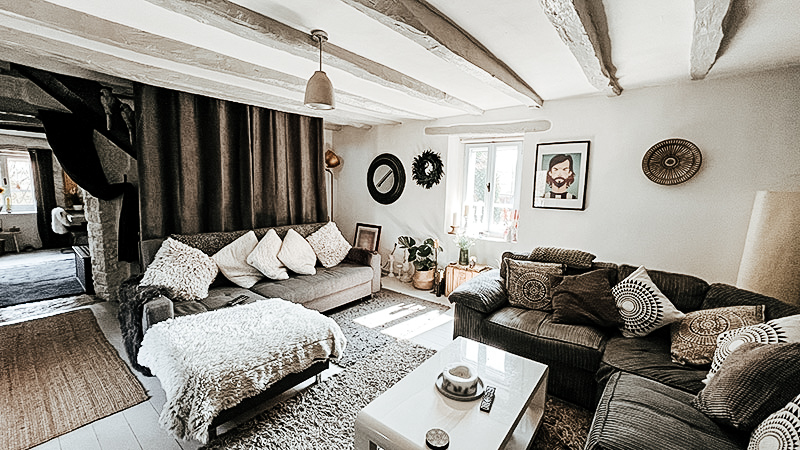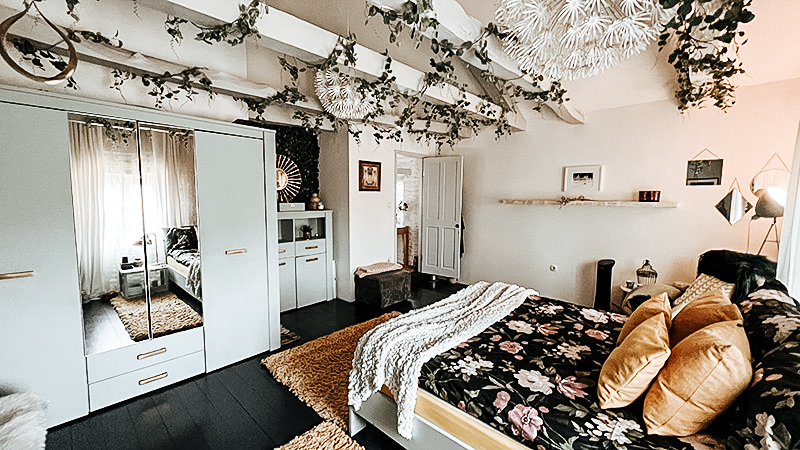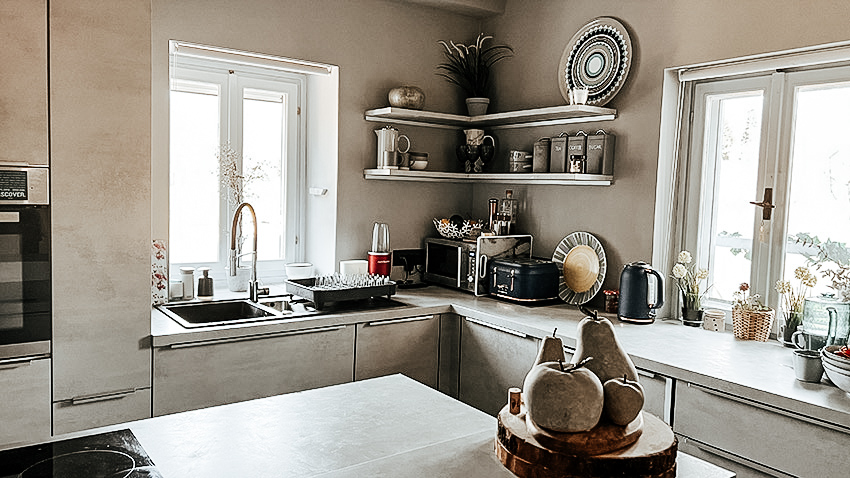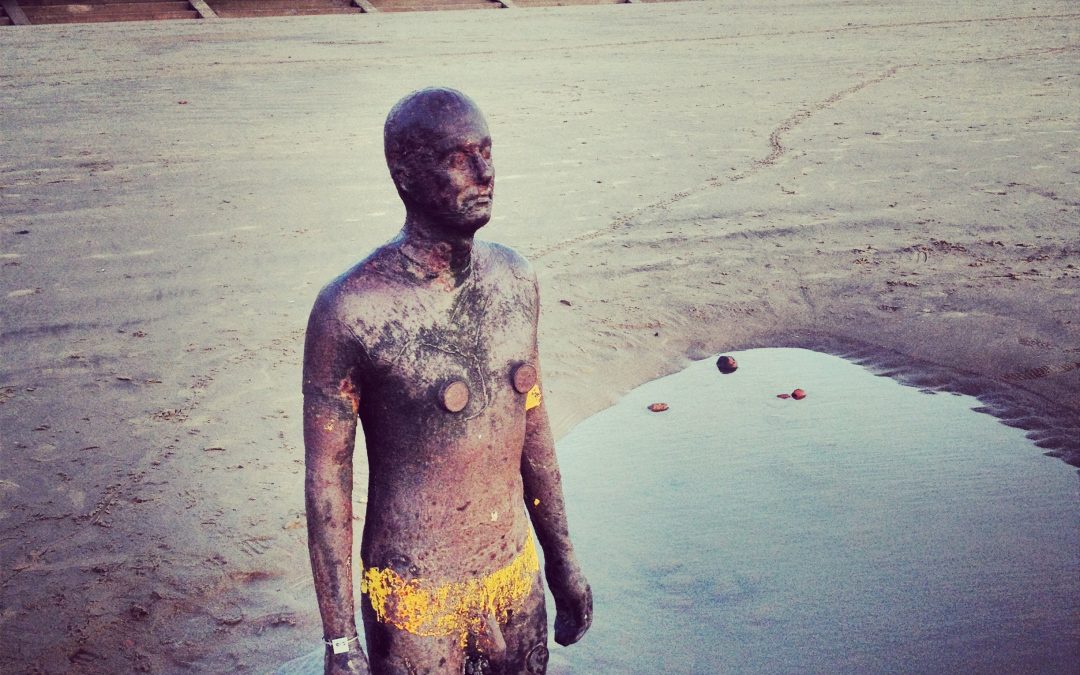
by Helen | Dec 7, 2023 | Travel, UK
It’s been a while since we’ve visited the permanent sculpture exhibition on Crosby Beach, but it was a place we’d often drive over to from Manchester, if we wanted to get some blowy, fresh air. Called Another Place, it is a piece of modern sculpture by British artist Antony Gormley, featuring 100 cast iron figures, modelled on the artist’s own naked body, facing towards the sea. After being exhibited at three other locations – the beach of Cuxhaven, Germany, Stavanger in Norway and De Panne in Belgium – it was put on display at Crosby in summer 2005. On 7 March 2007, Sefton Metropolitan Borough Council decided that the sculptures should be permanently installed at the beach.
The figures stand on the beach, and depending on what time of day you visit, can be fully visible, partly submerged, or if the tide is high and in fully, completely submerged. Eerily, at times like this, you may see a head emerging from the water when the waves roll back – I’d imagine this could be a pretty disconcerting sight if you arrived at the beach and knew nothing of the statues. They are spaced liberally across the beach for about three kilometres and almost a kilometre out to sea. Each iron man faces the water and they are all identical and emotionless. According to Antony Gormley, Another Place harnesses the ebb and flow of the tide to explore man’s relationship with nature.
The seaside is a good place to do this. Here time is tested by tide, architecture by the elements and the prevalence of sky seems to question the earth’s substance. In this work human life is tested against planetary time. This sculpture exposes to light and time the nakedness of a particular and peculiar body. It is no hero, no ideal, just the industrially reproduced body of a middle-aged man trying to remain standing and trying to breathe, facing a horizon busy with ships moving materials and manufactured things around the planet.
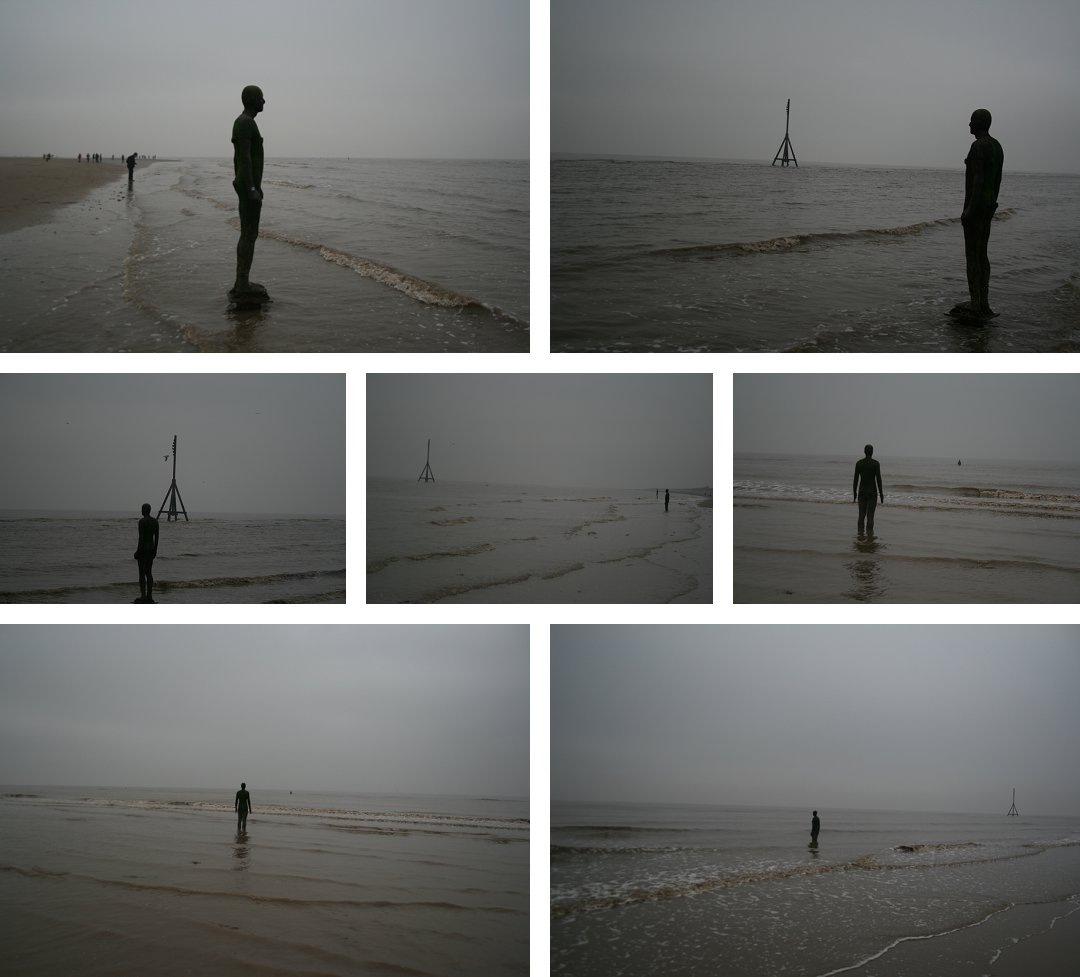
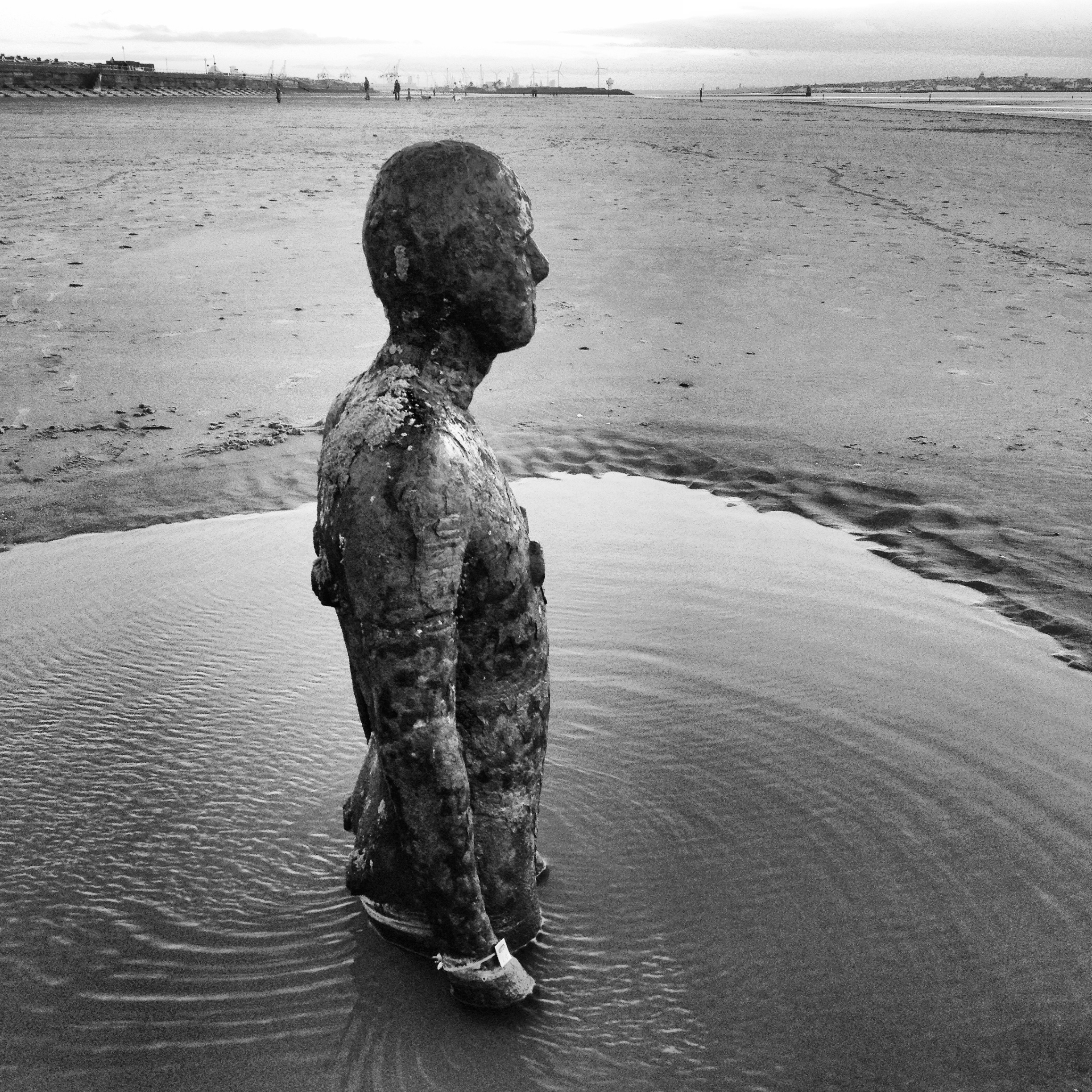
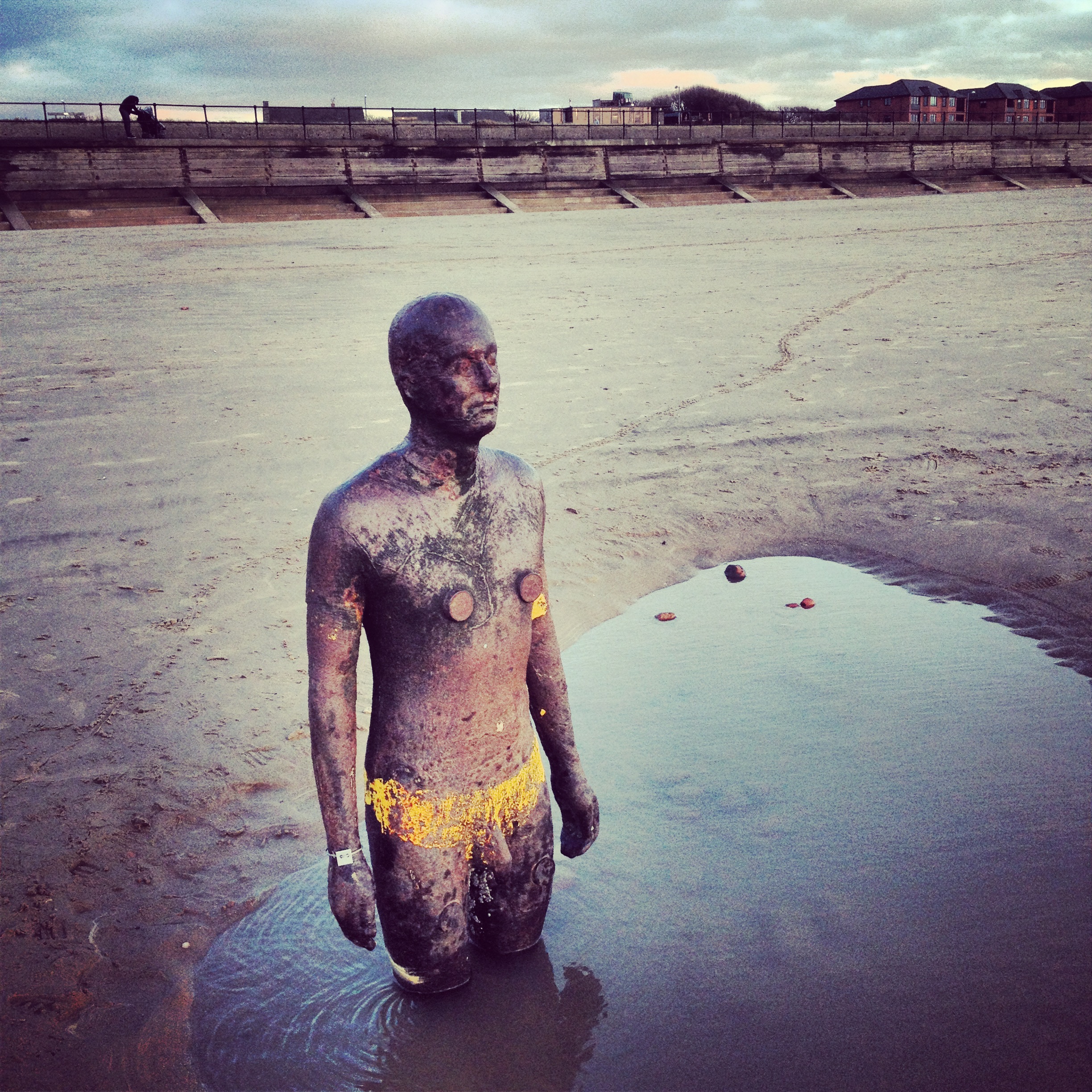
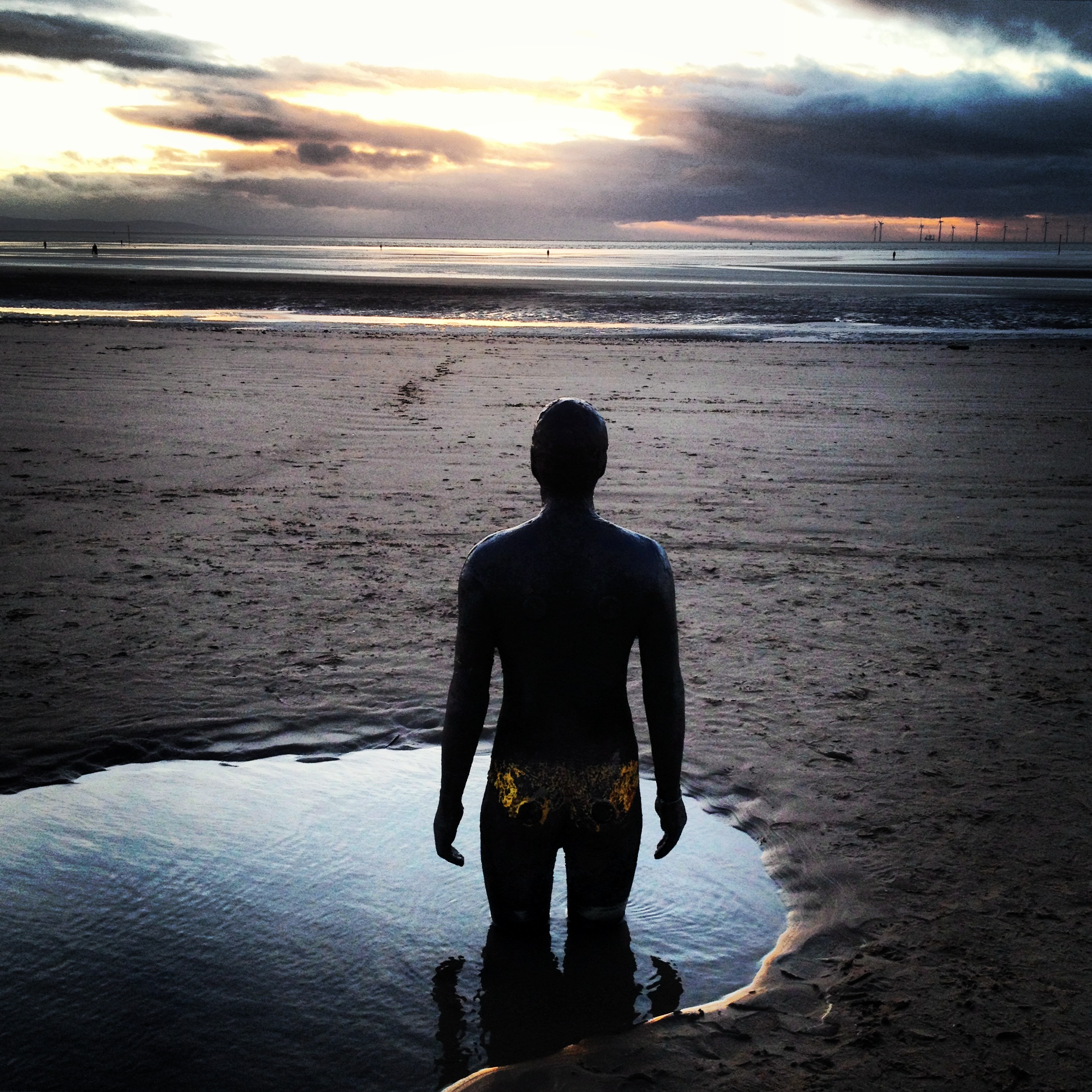
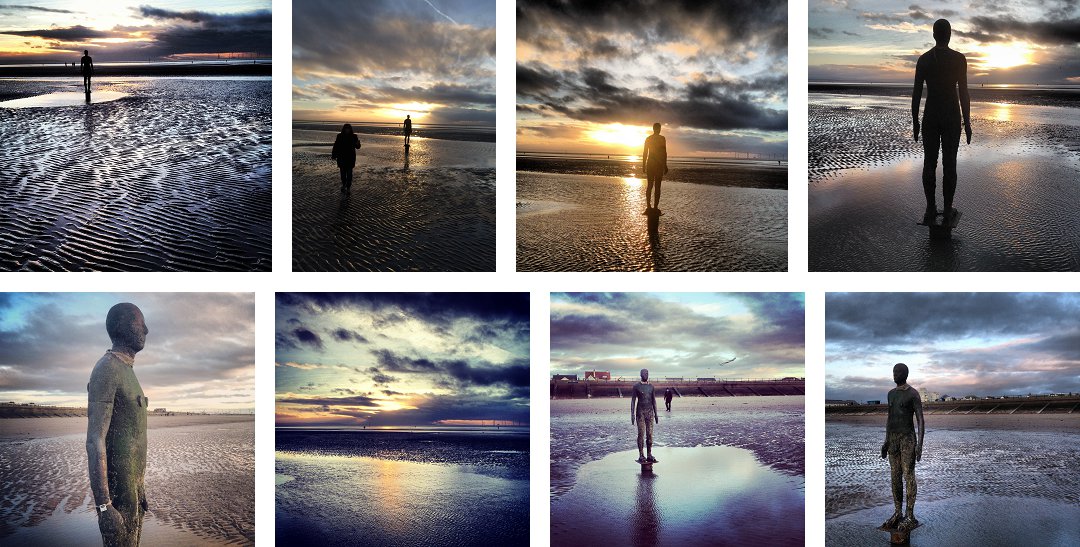
Parking is available at Burbo Bank car park, by the Crosby Coastguard Station, and the statues stretch out on the beach below. Our only advice would be, if you visit in the winter – wrap up warm, as the wind can be biting. And, watch the tides – they come in fast!

by Helen | Nov 30, 2023 | France, Travel
Continuing our late summer road trip to France, we headed to the city of Nîmes, known for its well-preserved Roman monuments such as the double tiered Arena of Nîmes, dating from approximately 70 AD and still in use for concerts and bullfights, and the Pont du Gard tri-level aqueduct and the Maison Carrée white limestone Roman temple, both around 2,000 years old. This trip showed that our knowledge of France is quite limited, largely to Paris, because a lot of the places we stayed, we knew very little, if anything, about. Nîmes being one of them.
Our timing for this stay, however, was spectacularly bad. We arrived on a Tuesday afternoon and were delighted that our hotel was located on a beautiful square – Place d’Assas – filled with fabulous looking bars and restaurants. It was looking as if we’d be spoiled for choice come Tuesday evening. Sadly. we’d arrived just as the whole city was literally taking a couple days rest after an extended weekend of celebrations, marking the Maison Carrée’s inclusion on the UNESCO World Heritage List. A weekend of parties, celebrations, music, street-food, fireworks etc etc etc. Meaning that come the day we arrived everyone was so shattered, the whole city had literally shut down. We did eventually find a great Italian restaurant which was open, saw the Forum and the Arena and stayed in a fab hotel, so all was fine in the end.


Located on the edge of the square, and a couple of minutes walk from the Maison Carrée, the Royal Hôtel is an old 19th century cloister, full of charm and authenticity. It has recently been renovated and from what we saw – communal areas, breakfast room and our room – it has been carried out sympathetically, but with quirky and modern twists, making it a bit of a stand out hotel. Our room was a superior double room, and it was huge, with a very spacious bathroom, with a very powerful walk-in shower. The room’s enormous shuttered windows, overlooked the square, which is incredibly impressive. Lots of trees – I love cities where they value trees and nurture them, rather than chopping them down – and statues and fountains. Elegant and very beautiful.


Communal artwork in the corridors and staircases is very playful and gives a strong nod the kind of hotel this is – fun, not stuffy, a bit different and definitely a bit boutique. The shot of The Rolling Stones was apparently taken when they played at the arena – which still hosts bullfights, unfortunately.


Breakfast was included in our room rate, and for the hotel, was done in quite an inventive – and probably cost effective – way. A tray for each of was brought to the table, with fresh croissants and bread and individual jars of museli, along with little pots of jam, packs of butter, sealed yogurt, sealed nutella and fruit. I certainly didn’t eat everything and I’m assuming that what isn’t opened is reused. It would seem a real waste of money if unopened juice or jams were thrown away. We thoroughly enjoyed breakfast, and with unlimited coffee, it set us up for the day. It was also served in a lovely dining room, which may also be open to non-guests as a couple of guys had set up with laptops etc at other tables and were working.


We found this hotel to be really good value for money, well positioned and perfect in style and decor. Although it’s a shame that the city was on a general holiday post-celebrations and so we didn’t get the full on Nîmes experience, it didn’t detract in any way from our stay. A beautiful city and a fab hotel.
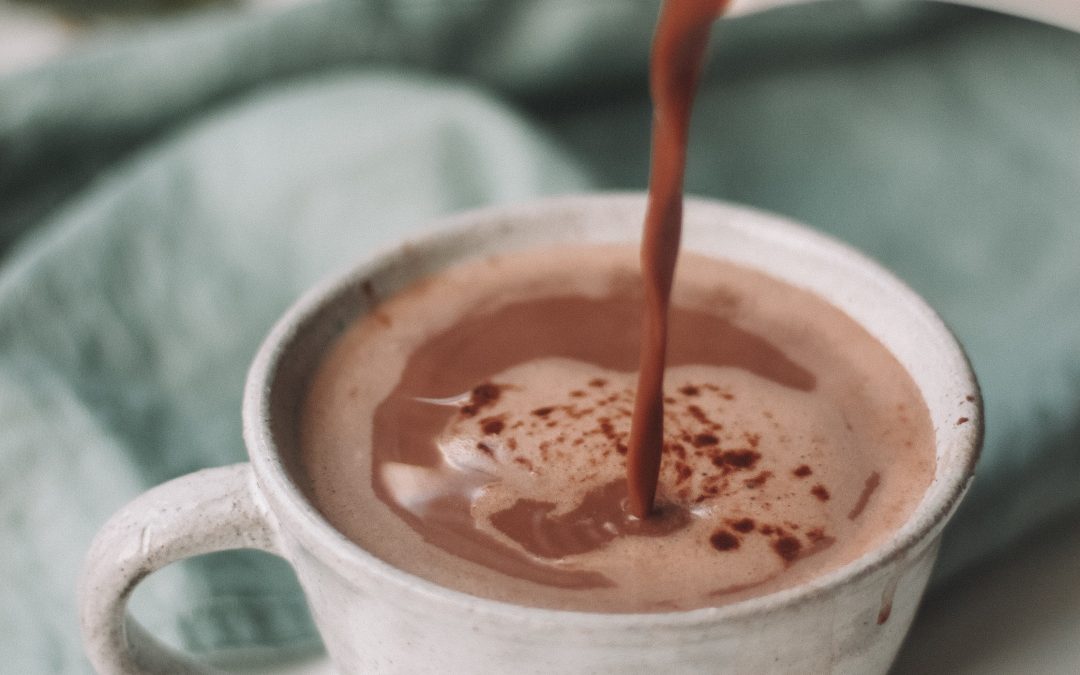
by Helen | Nov 29, 2023 | Lifestyle
And just like that, we’re into the coldest and darkest part of the year. It only seems days ago that we were sweltering in the garden, throwing windows wide open, dispensing with even summer duvets and sleeping with fans whirring away next to us. Winter in Istria can be pretty magical. Don’t get me wrong – we do have days where the low lying grey clouds seem as if they’ll never go away. Days where rain just falls and falls. But it’s never like that for long. We have crisp, sunny days with blue sky – days when the sun still has a flicker of warmth in it, when you can sit outside a restaurant, although well wrapped up. We have days which are atmospherically foggy, which are also gorgeous.
Hibernation over the winter is a lovely option, but just not practical for us. We still need to go out and about, live our lives and just generally *do * things. However, it’s certainly a very different time of year as the house transforms from a summer home, filled with light and heat from the sun and the buzzing outside of the cicadas and tweeting of the birds, to a winter house. A house where the windows are closed, timers go on so that lamps are lit from late afternoon, the sofas are strewn with throws, and it even smells different as more heady scented candles are burned and diffusers diffuse their winter aromas. The wood burners are lit – one earlier than the other to get the house warmed up evenly, and we find we reach for the hot chocolate much more frequently.
I think I’ve always harboured a desire to live in a Scandi- hygge home, and with this one, we’re more able to create it than in our three bed terrace back in West Didsbury. It feels more authentic here, as we’re quite rural, surrounded by small forests and a wintery landscape when we look out of the windows. So, come December, my Scandinavian home emerges, and we wrap ourselves up in cinnamon and orange and faux fur and hot chocolate and candlelight. Although, and this must be emphasised – not all the time! Most days, we’re working away on laptops, designing, talking to clients, resolving website issues, paying bills, shopping, cleaning – you know, the normal stuff that we all do. Which is why, when we have a bit of down time, we light those candles, and embrace the winter.
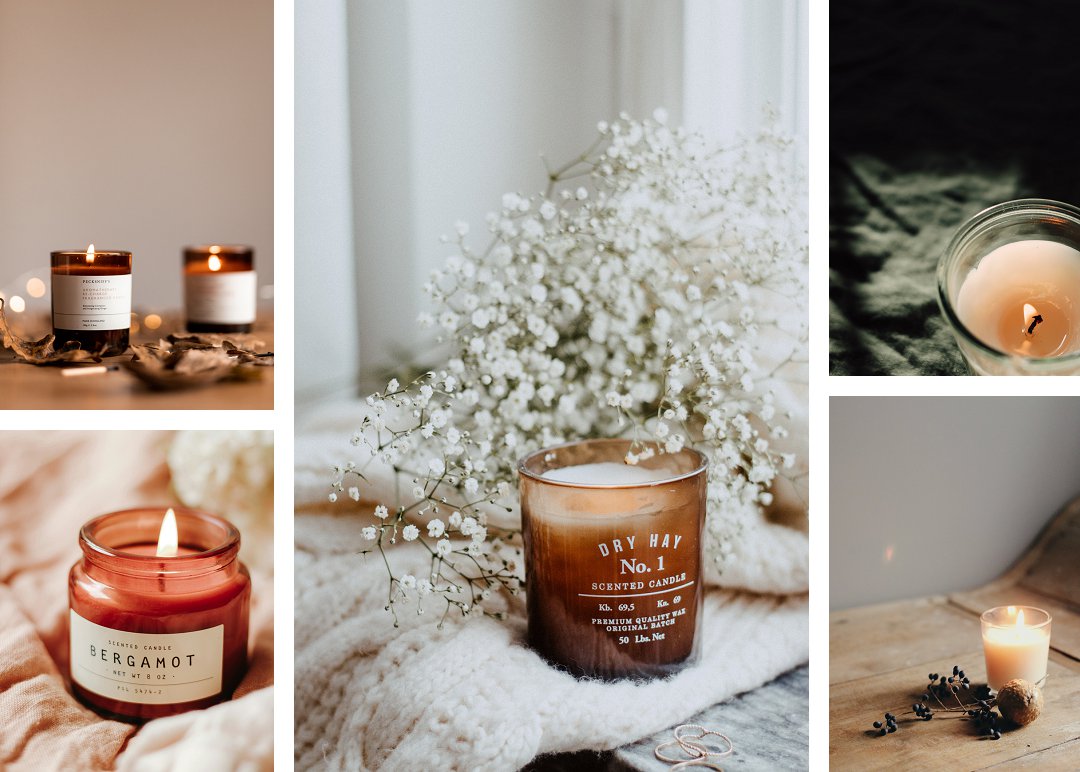
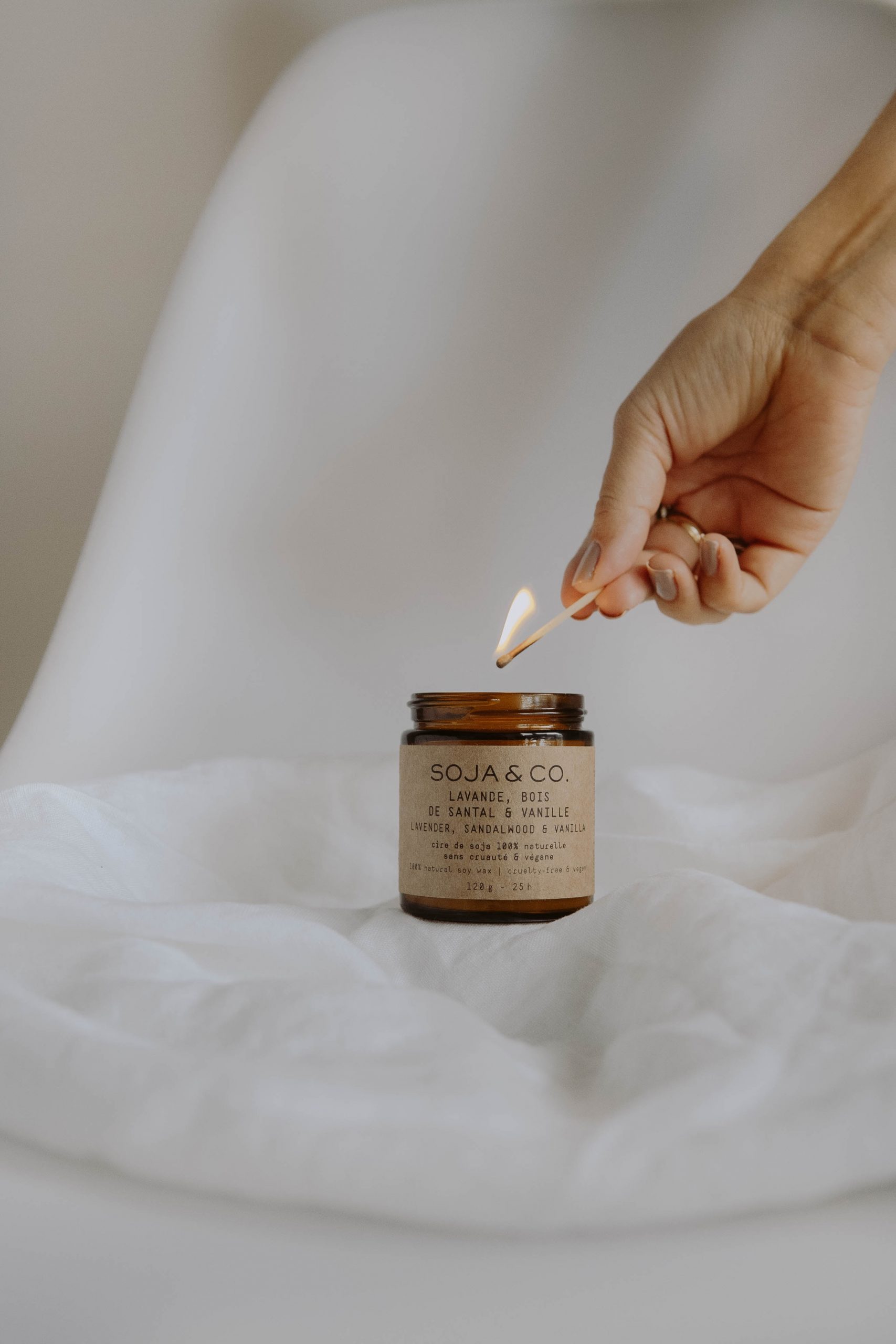
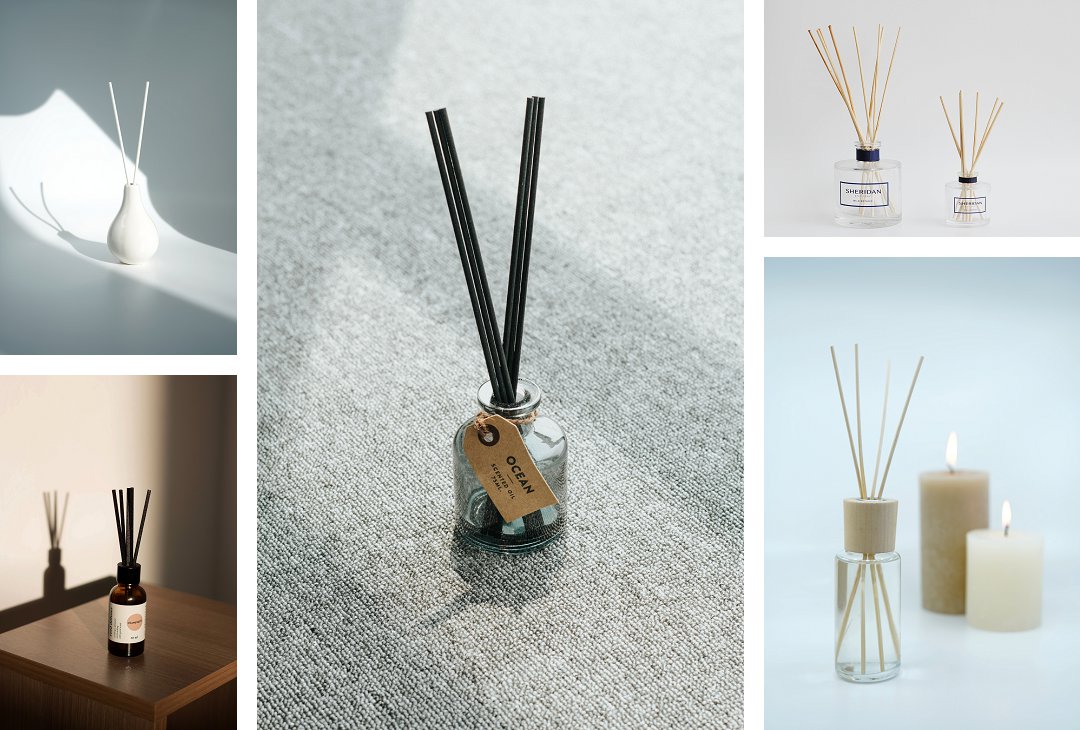
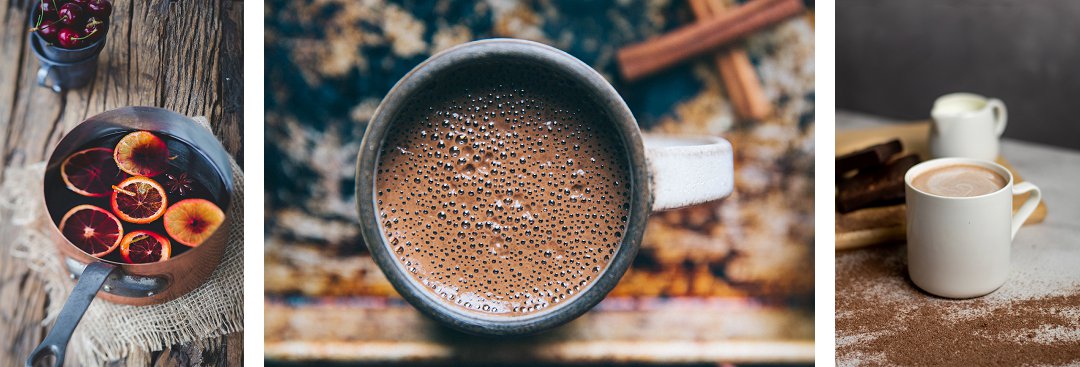
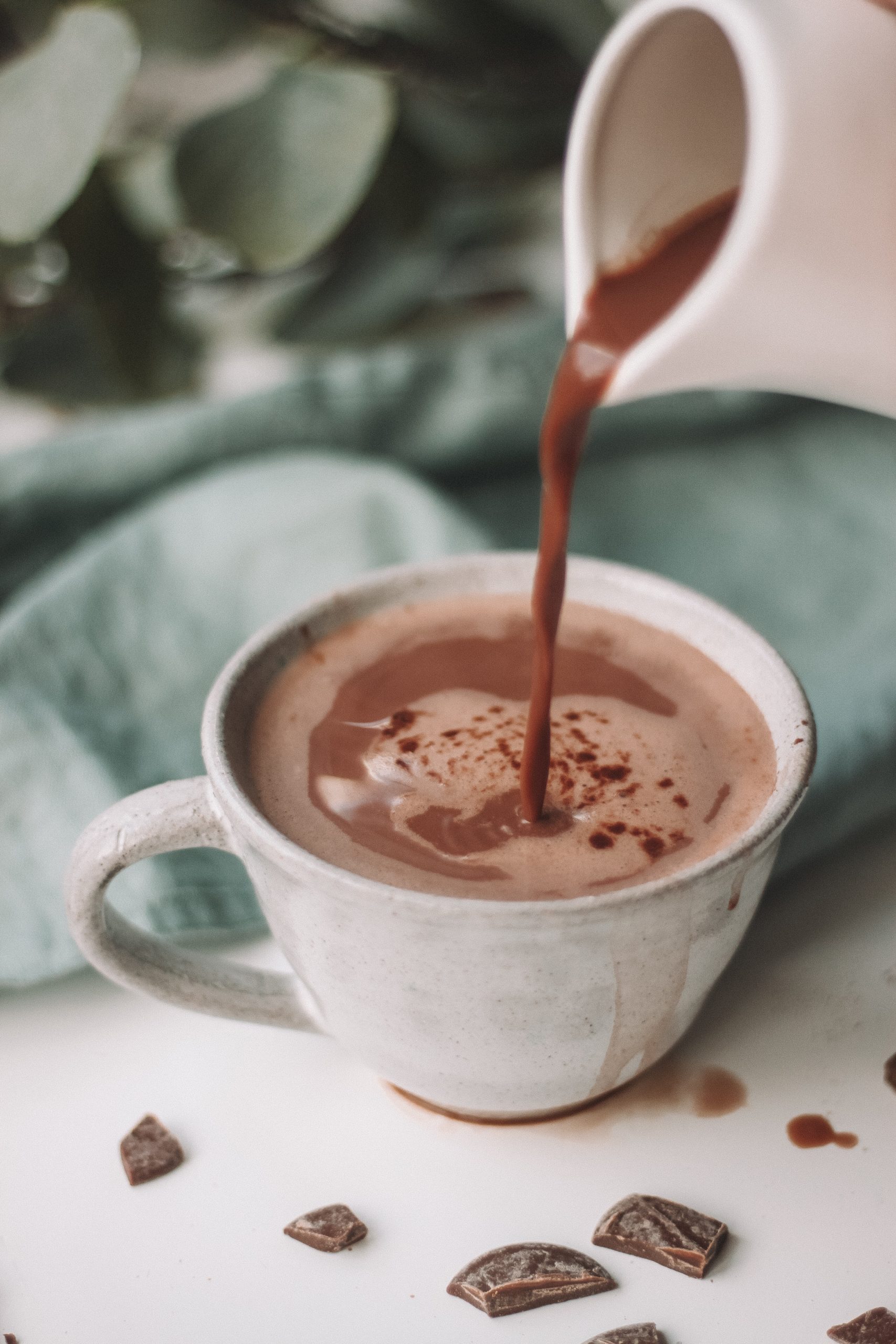
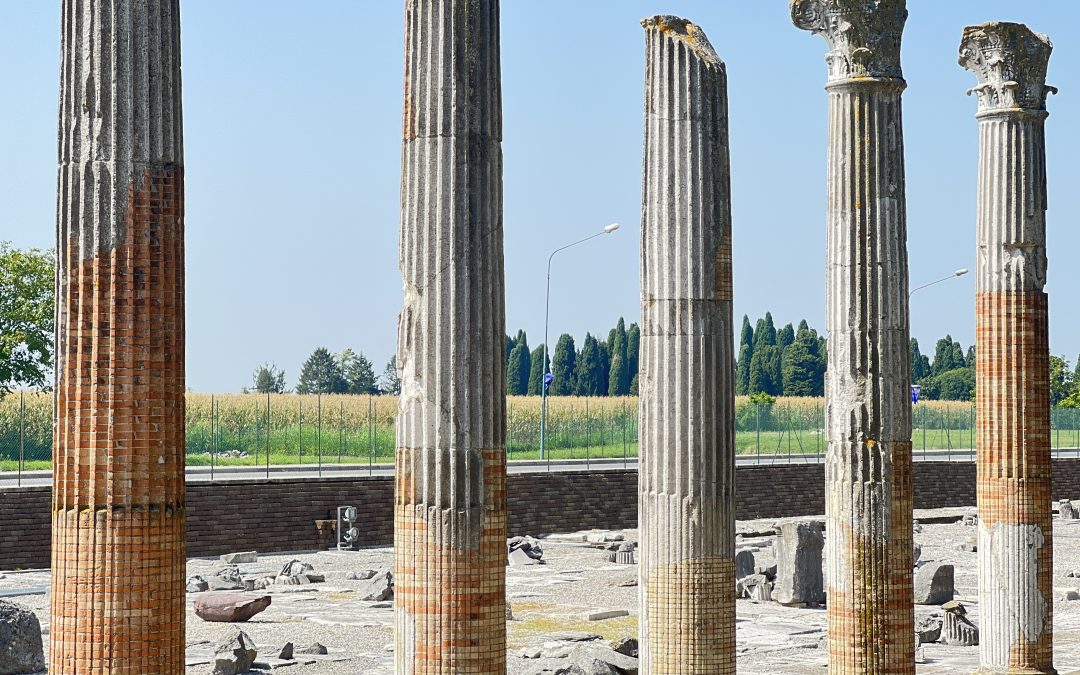
by Helen | Nov 29, 2023 | Italy, Travel
Aquileia was an ancient city, founded in 180BC, lying at the head of the lagoons, to the east of Venice, on the road to Trieste, as a Roman colony due to its strategic position between the port and the inland area. It is one of the most important archeological sites in Northern Italy and it was elected UNESCO World Heritage site in 1998, for the significance of its archaeological area and the beauty of the floor mosaics, which can still be seen.
In the summer, we were travelling back from Venice, and rather than take the motorway, we decided to do a new route, a road which more or less hugged the coast and gave us the opportunity to visit the resort of Grado, which we’ve been intending to do for ages. But, before we got to Grado, we just had to stop, when this sight greeted us, at the side of the road…
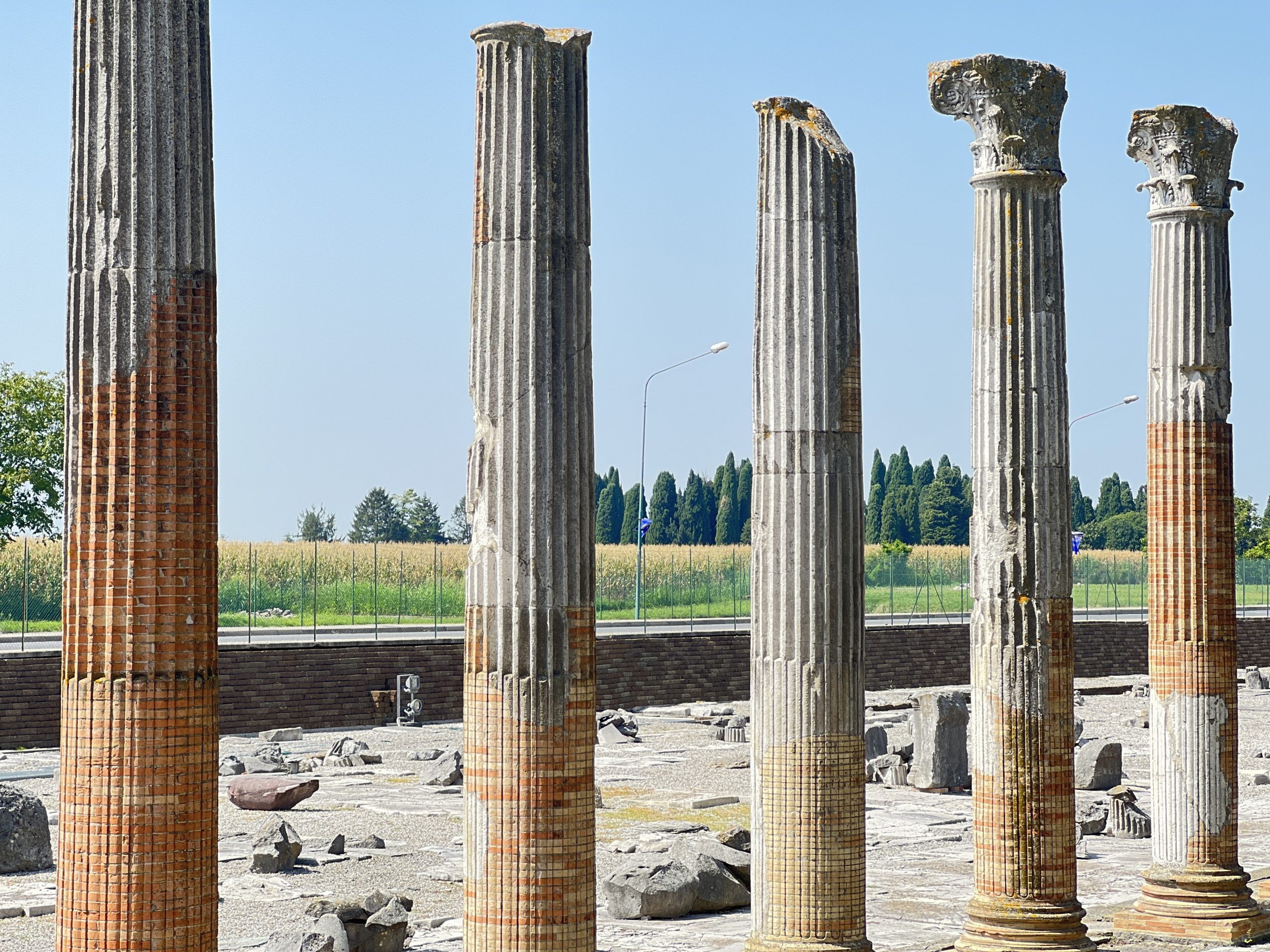
We’d heard of Aquileia, but had no idea it was effectively an outdoor museum, full of Roman antiquities. It was a very, very hot day when we stopped, and we were keen to also get to the coast and hopefully find a cooling breeze, so our trip was short – but over the winter, we will return, as there is just so much more to see.
The Forum, of which these columns were a part, was the very heart of the political, administrative and social life of the city, built as early as in the 2nd century BC. It was huge and rectangular in shape, measuring nearly 200 meters long and about 80 meters in length, and originally there were 50 columns. Before being restored, the columns lay dispersed in pieces, all facing the same direction as a consequence of a violent earthquake. I love the idea that this is where citizens would meet each morning to buy and sell goods, chat about recent events or hire workers for the day. Politicians and merchants would talk to their friends and competitors, negotiate deals, discuss politics and try to increase their influence.
Today, the ruins cover quite an expanse, and there is a lot to see – a day would probably be needed to take everything in. I found this information online, which provides quite a guide to the town :
Within the archaeological area, much of it is in the open air and with free admission. Here you will find the remains of the Forum, the river port, and the late antique markets and the Roman burial ground. The precious mosaics uncovered during the excavations are preserved in the Paleochristian Museum and the National Archaeological Museum of Aquileia. The Basilica of Aquileia, is an extraordinary architectural complex bearing the signs of several renovations and extensions carried out over the centuries. At over 750 square metres, the real treasure of the basilica is the floor mosaic from the 4th century, the largest in the Western Christian world.
The archaeological site Domus and Episcopal Palace are also unmissable stops in Aquileia. Through the work of the Aquileia Foundation, visitors have the rare opportunity to see the superimposed floor levels of different eras thanks to skilful architectural play. This archaeological site is the most recent to be opened to the public.
January or February, with hopefully some snow, is when we are planning to return, and to get to know Aquileia more. We still it find it so exciting that we can just stumble across places like this – not in the sense that we’re the first people to have found these places, obviously. More in the sense that we didn’t know about them, until we either read about them, saw something online or drove past. And this is what makes living in Istria so cool – as well as all of the Roman and Venetian influences across our little peninsula, we are so close to Italy and all of its ancient sites. Some like Aquileia, almost being on our doorstep.
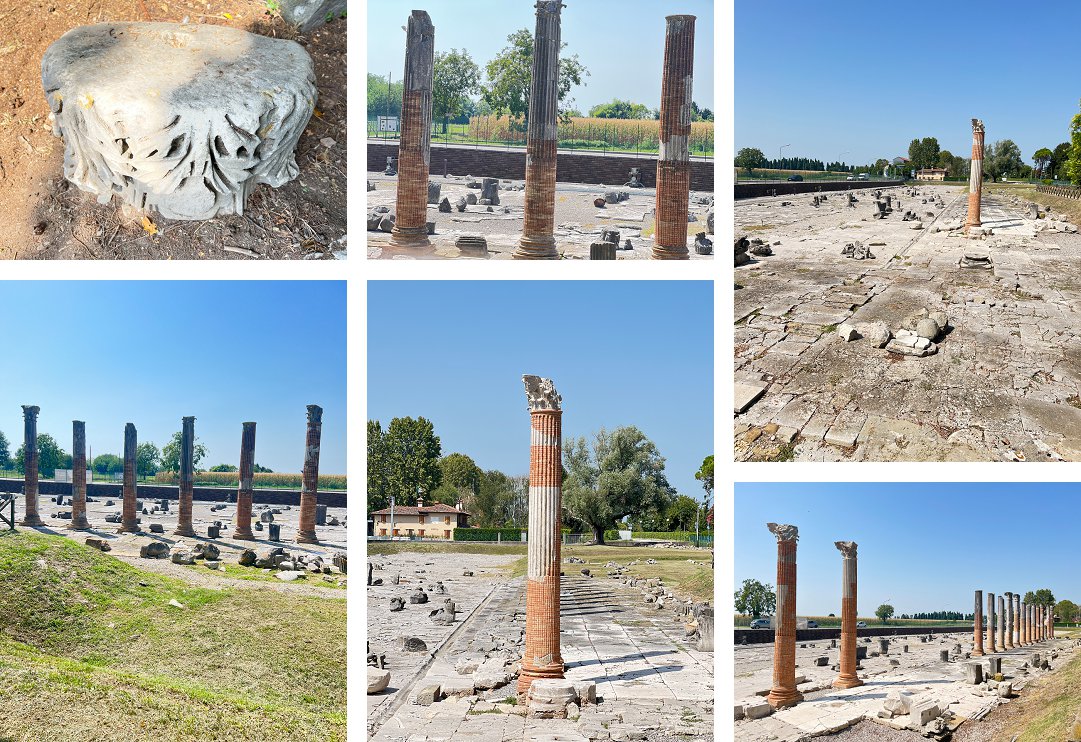
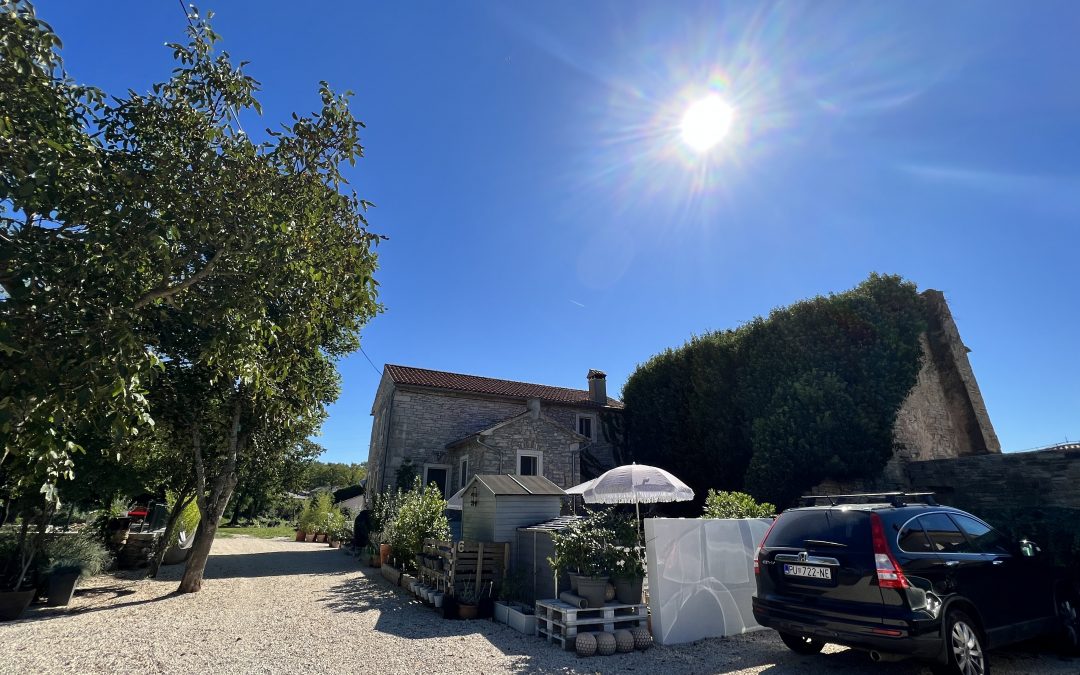
by Helen | Nov 29, 2023 | Renovation
We’ve never lived in a house before that has a private parking area. All of our previous properties have had on-road parking, and because we lived in busy Mancunian suburbs, parking could be tricky. Often, our car would be parked away from the house as you basically had to grab a space when you saw one. So now, it’s a real treat to have space for not one, but two, vehicles – and our own private land.
Initially, this was a grassed area with a big elderflower tree. However, the tree wasn’t the most healthy and it blocked out a lot of sun, so in our early days this was chopped down, and the cars were parked on the grassy area. This was good, as it meant they were on our land, but parking on grass wasn’t ideal, especially when it rained. Fast forward a few years, and we had this dug out and hard-surfaced, giving us for the time, a proper parking area.
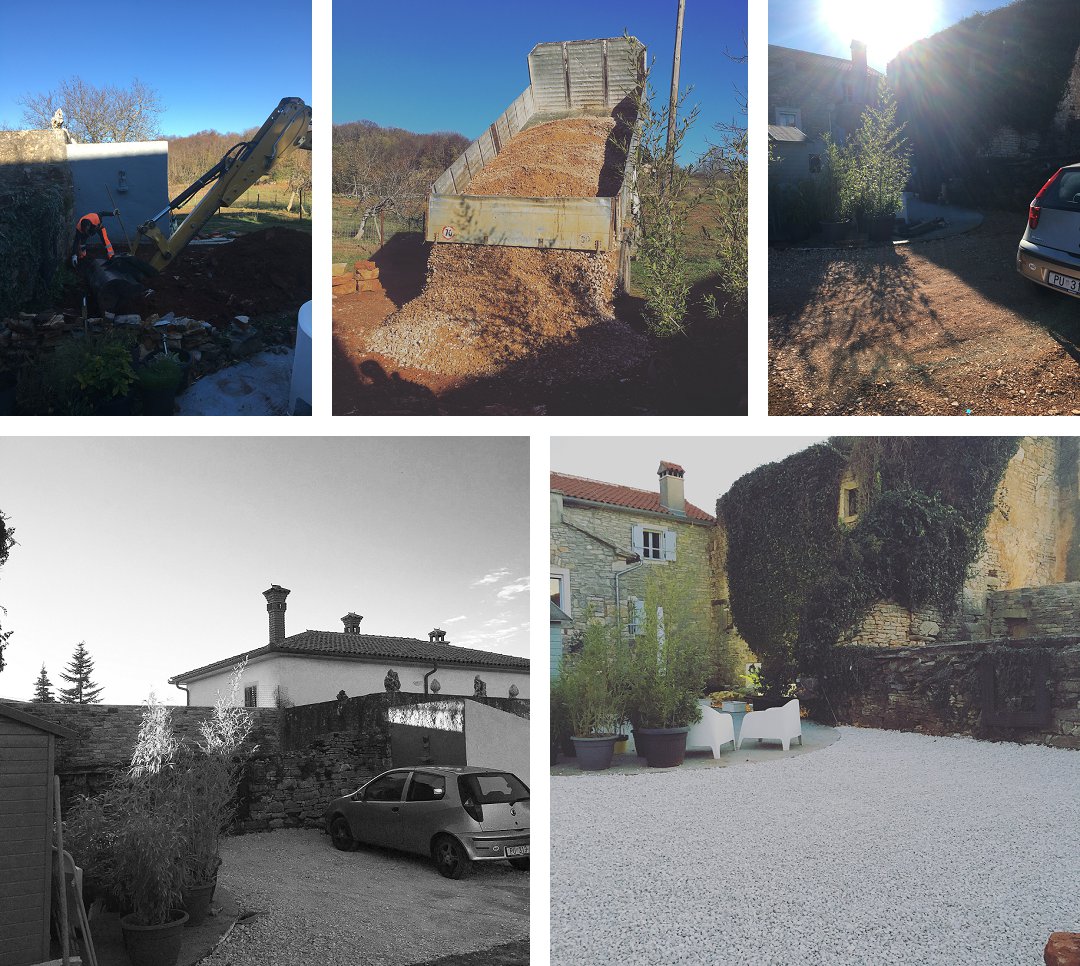
Potted trees – bamboos and olives – were stood in front of this area, providing a sort of screen, to detract from the cars, but we were sure we could better to enhance the garden and obscure the parking area.
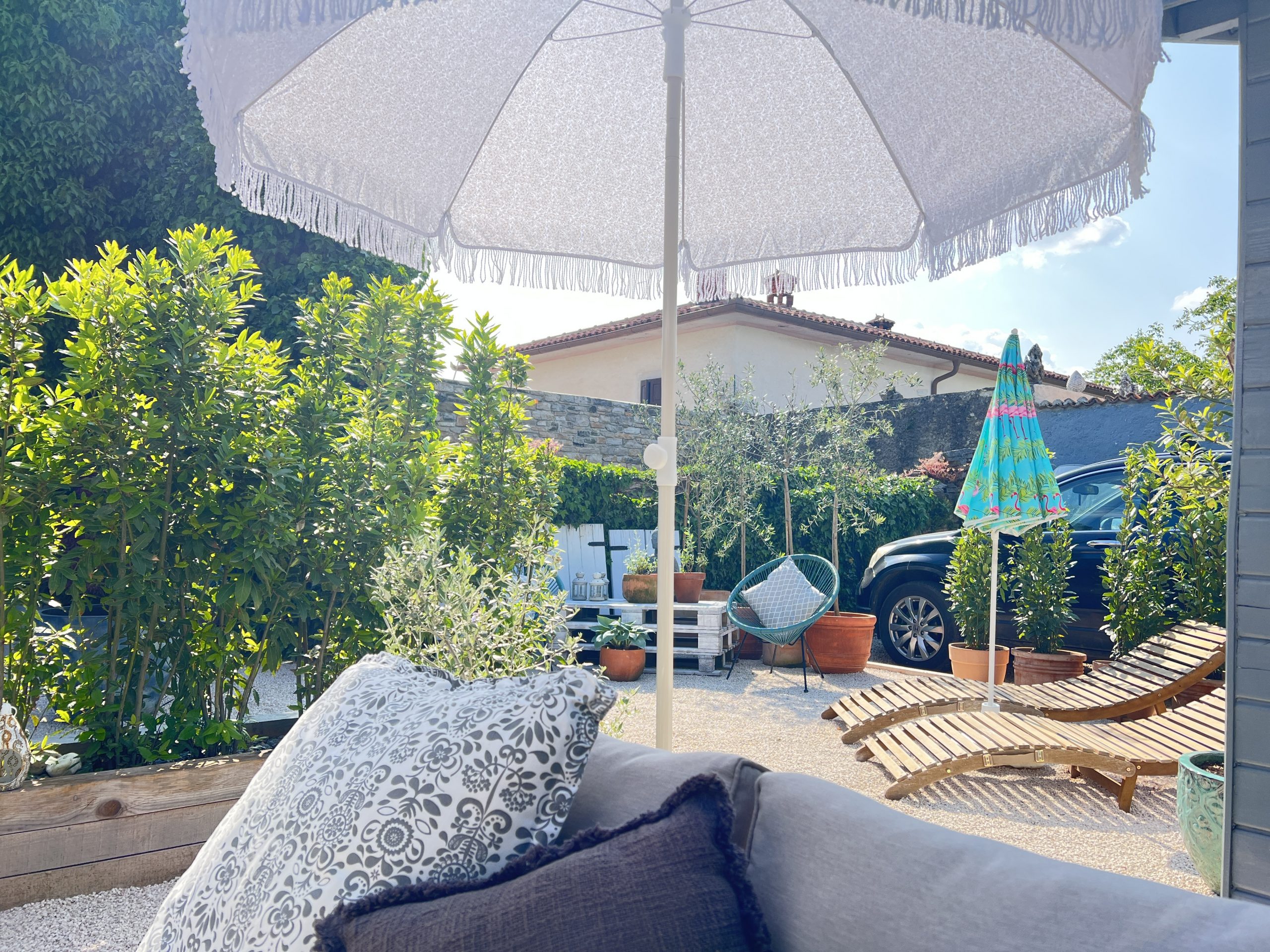
With a great builder on site, who was constructing lots of walls for us, to clearly define all of our boundaries, we decided that another wall was the answer. This time, we opted for two separate block walls, with a gap in the middle, affording us easy access to and from the cars. The potted plants were redistributed around the gardens, as well as the furniture. The wooden planter of bay trees was moved closer to the new wall and turned around, so that it sat horizontally, so that you walk around the planter to access the parking area. This has meant that the cars are all but obscured from the patio area.
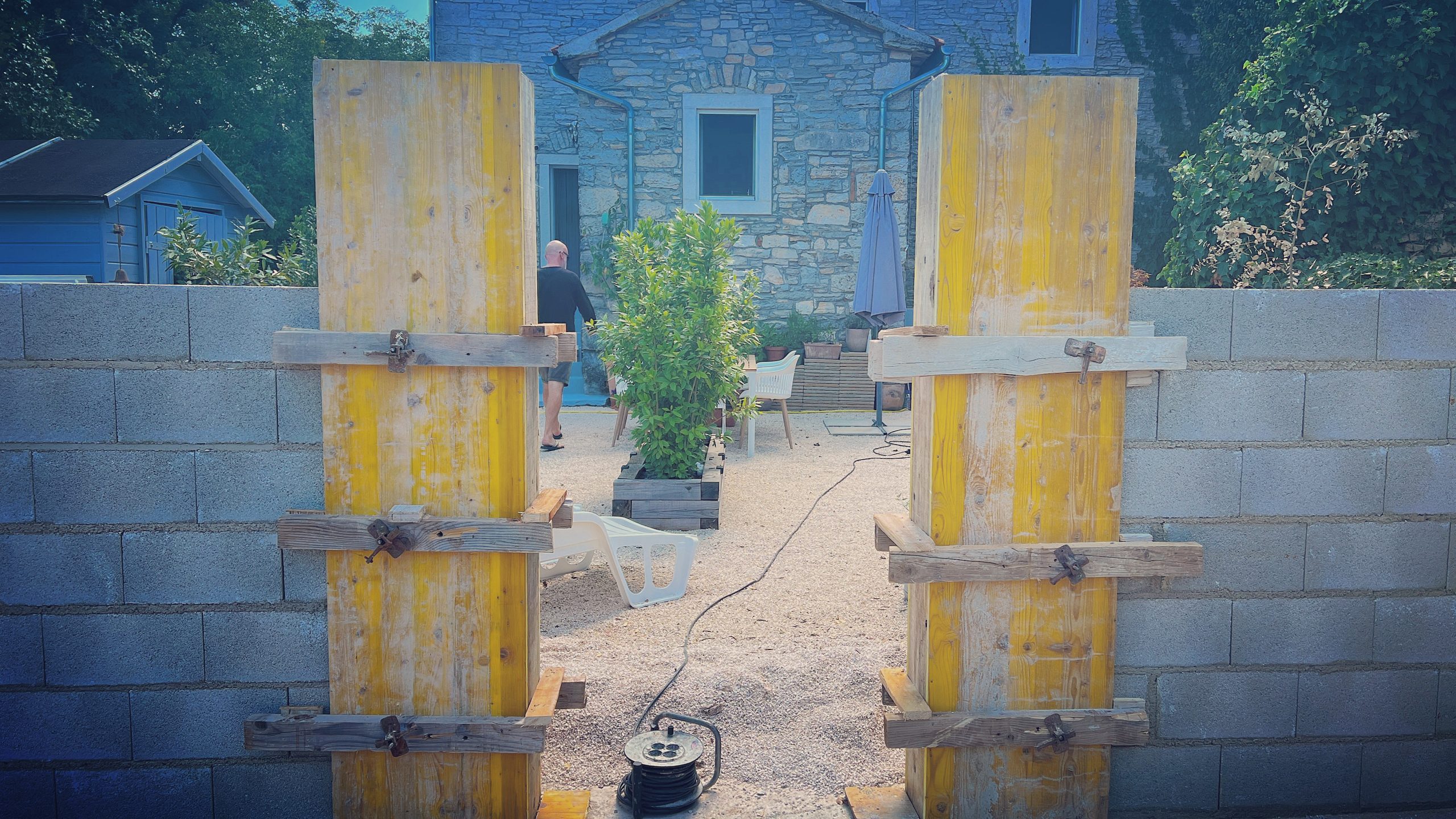
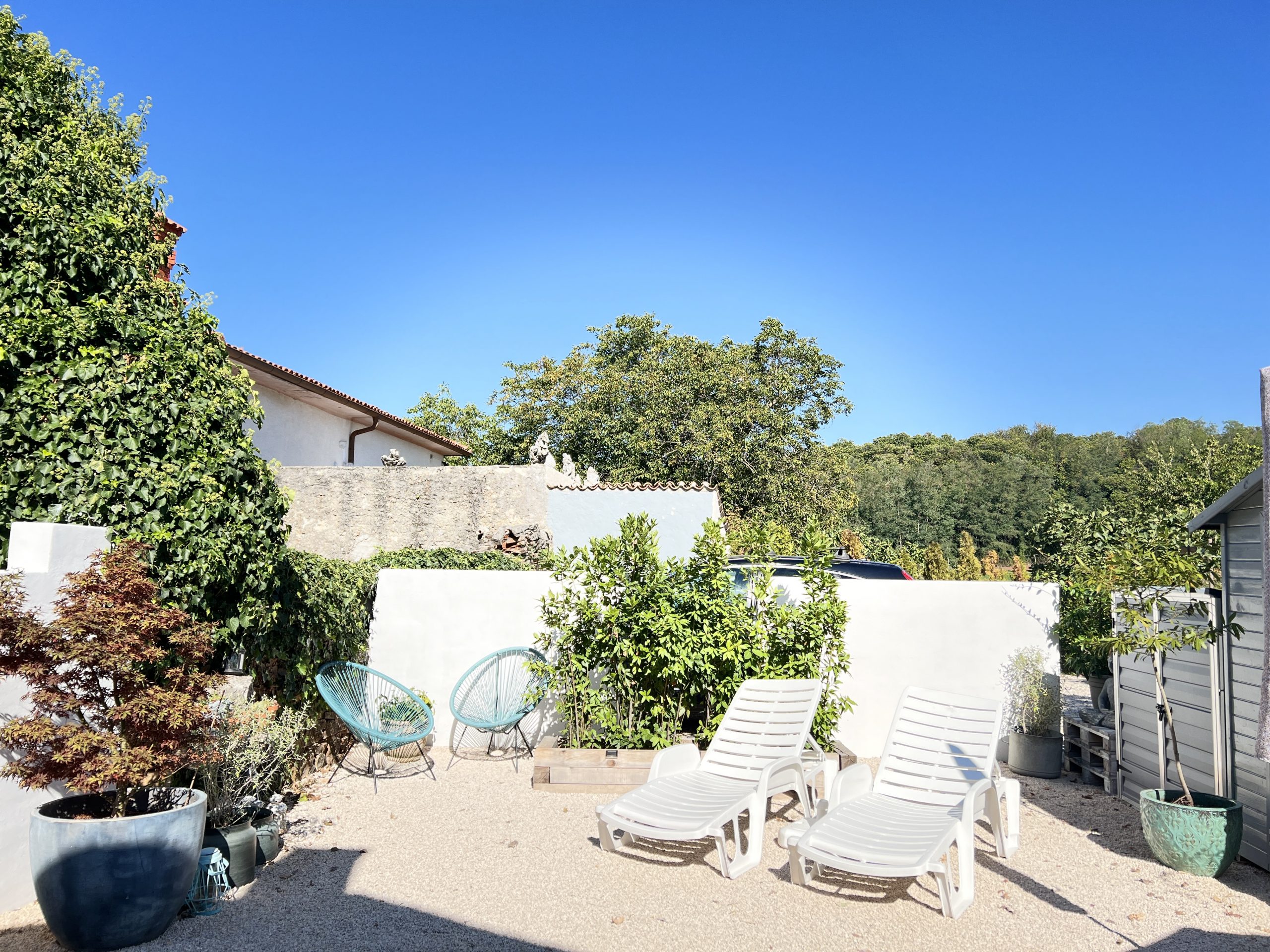
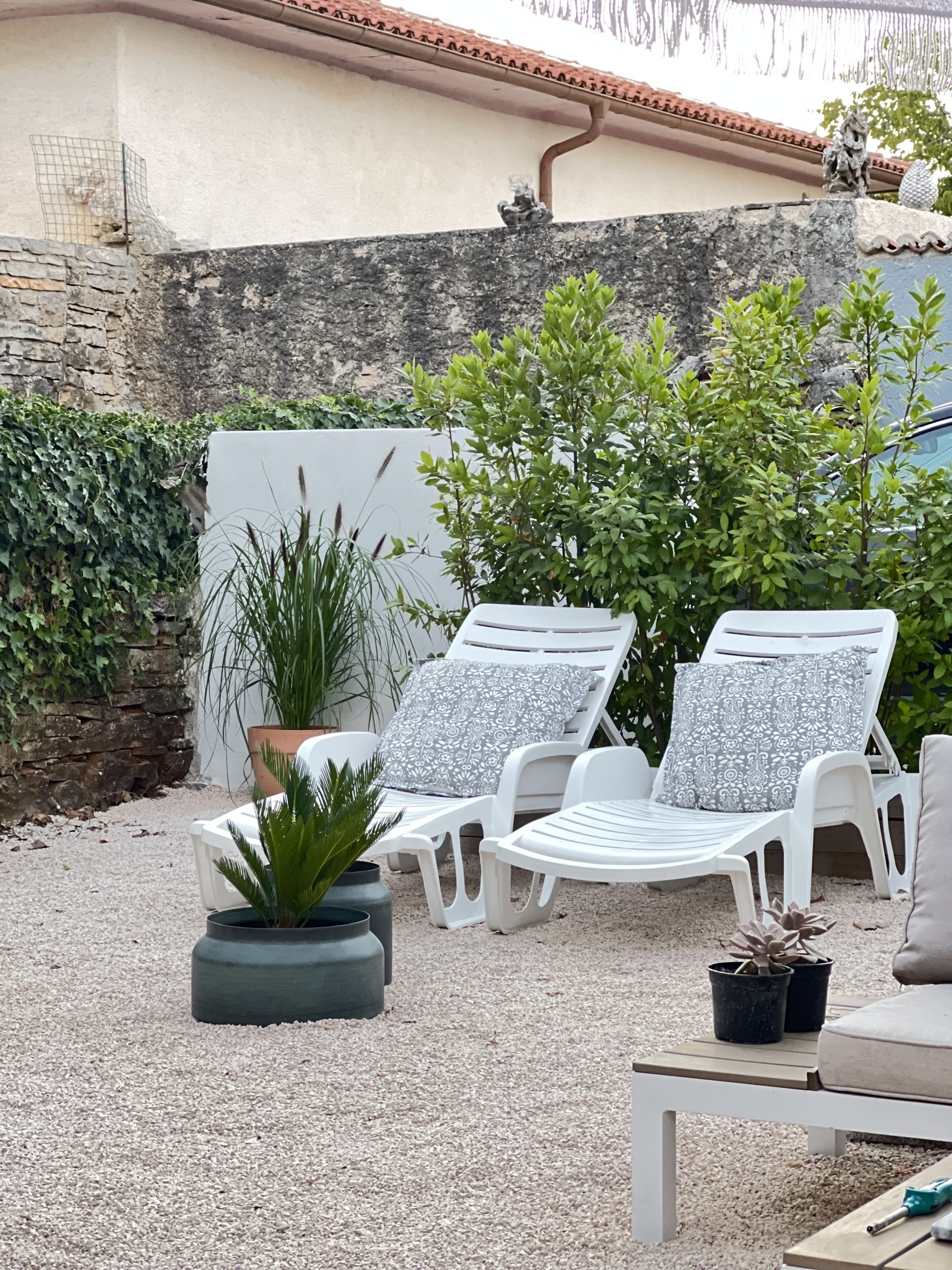
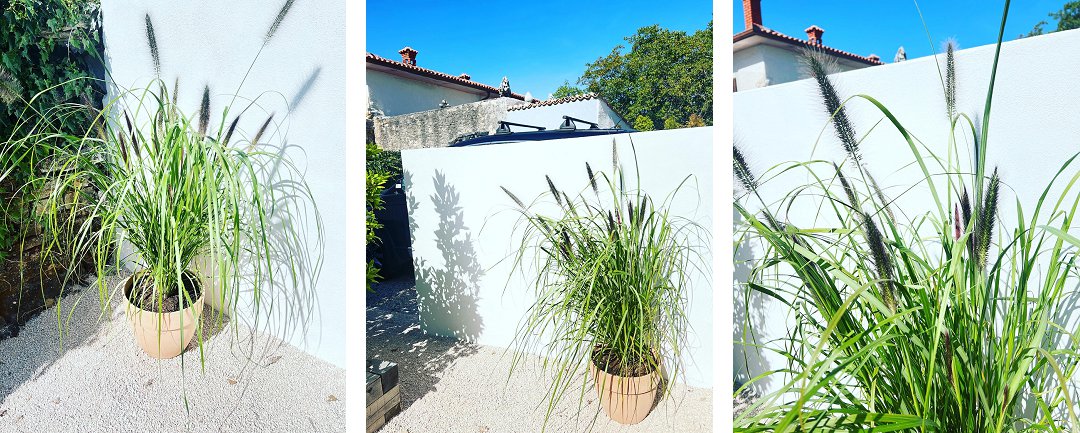
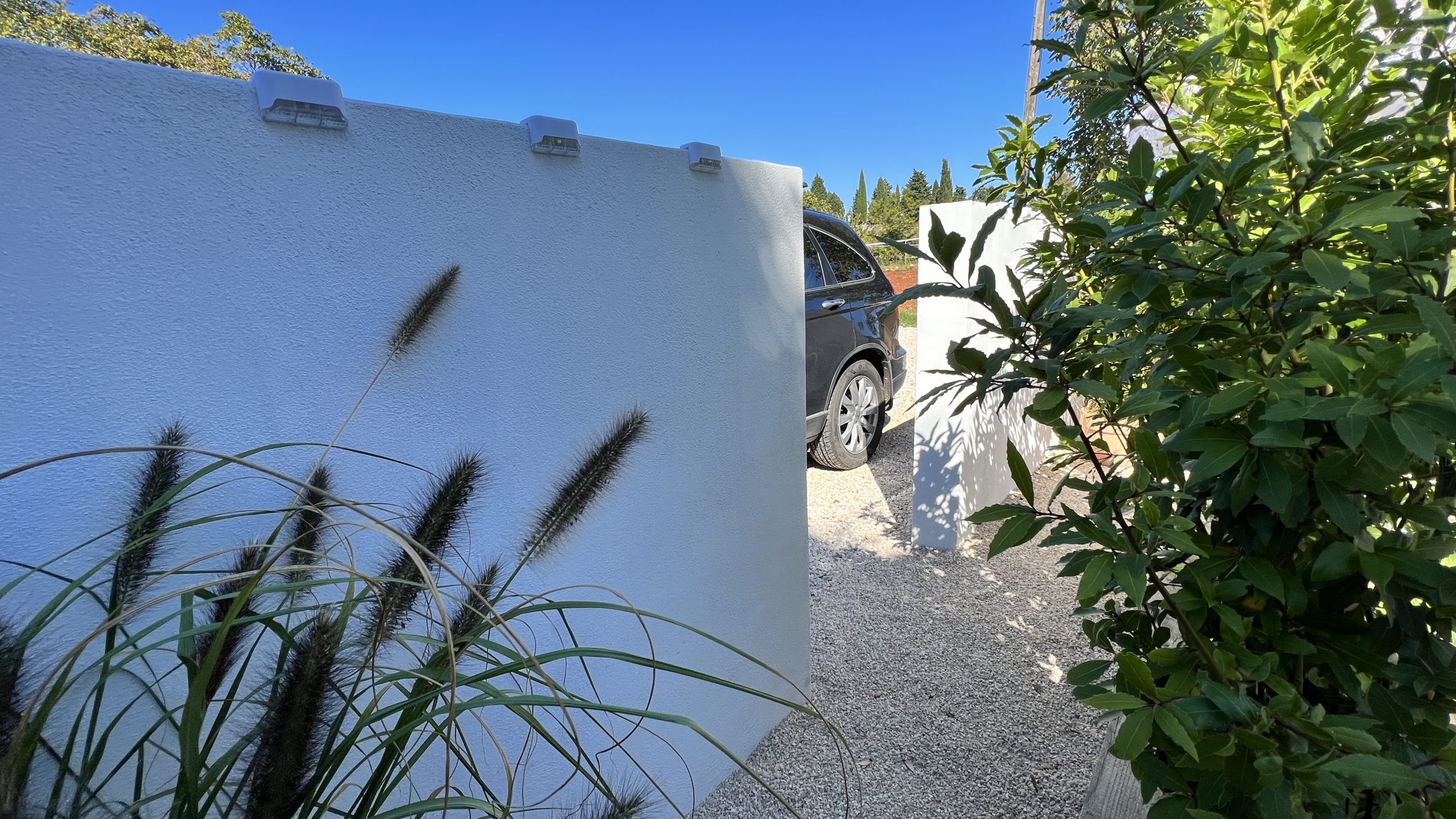
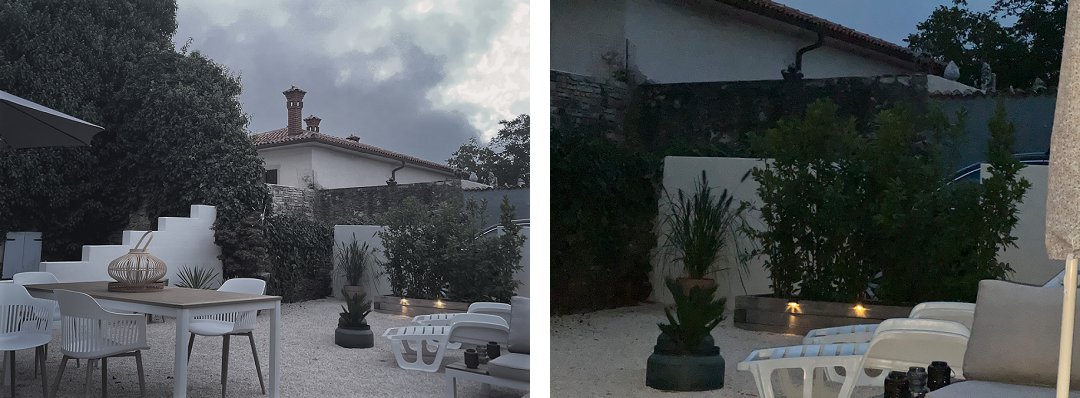
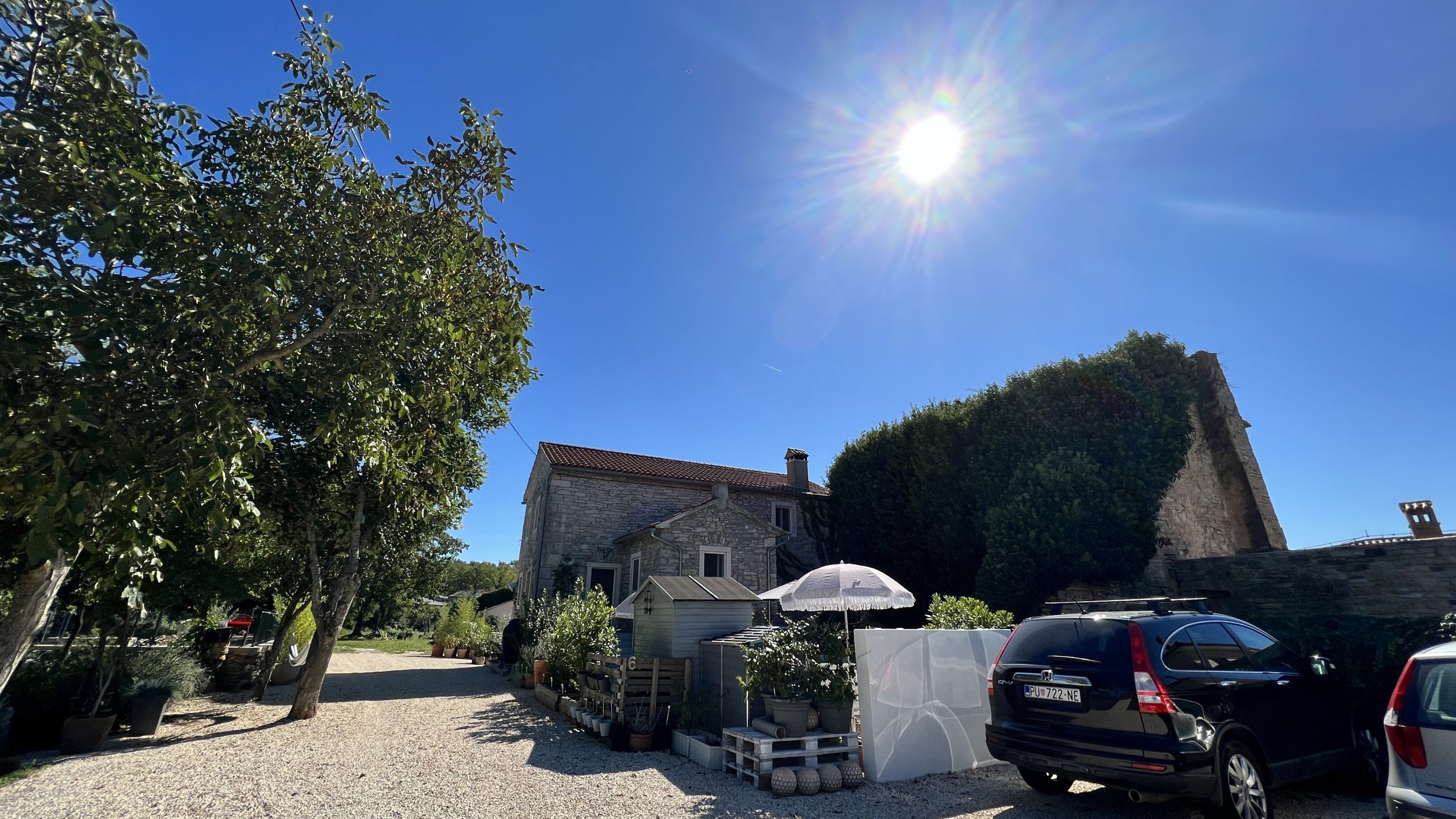
I think we are now more than happy with the exterior of our home. Especially when we look back to 2016 and this was the very same angle…
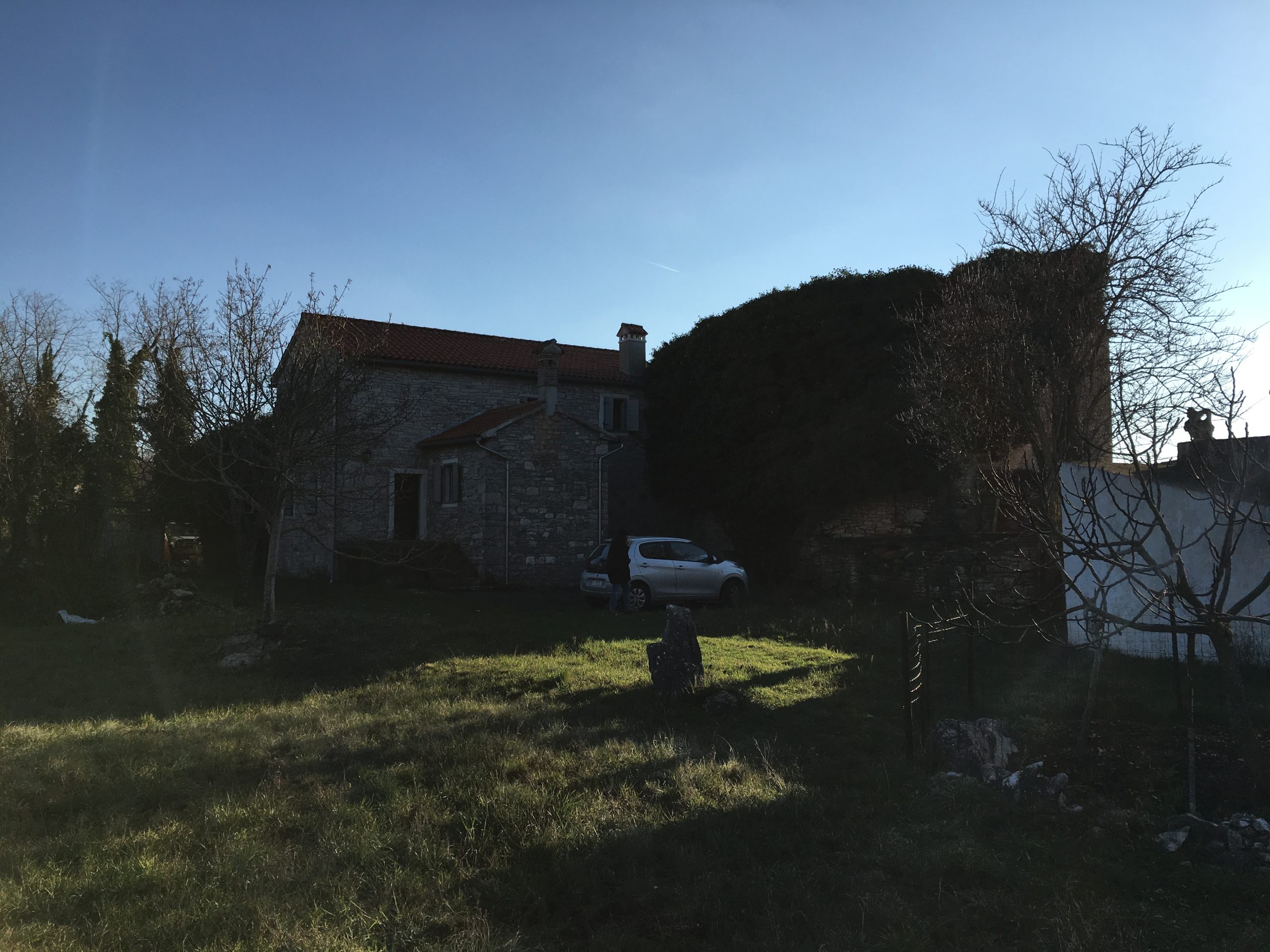
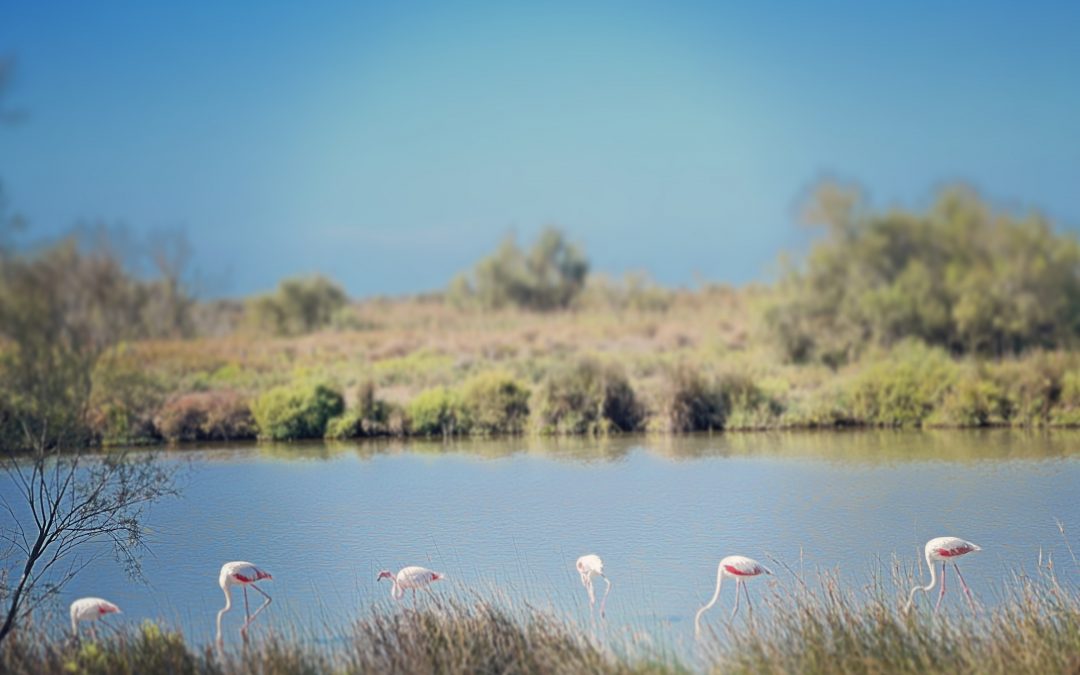
by Helen | Nov 28, 2023 | France, Travel

As a child I was really mesmerised by the Camargue. It seemed like a magical, fairy tale place, with white horses frollicking freely on the beach and pink flamingoes, standing serenely in calm waters. Even on the map of France, the Camargue looked like it existed in another-wordly place, almost falling off the edge of the southern coast of France. Into adulthood, it’s been the kind of place I never thought I’d get to see, because, I mean, why on earth would we be holidaying in the south of France?
Fast forward to September 2023, and we were indeed heading off to the South of France. Not to lie on the beaches of Nice or St Tropez, but to check out potential areas for a relocation. Long story, and will be covered elsewhere, but we had an itch we needed to scratch, and so we packed the car, and one Sunday in September, we headed off, via Trieste and Padova before crossing the border into France and doing a week of exploring. One of our stop offs for a night was in Arles, and on checking next morning, we saw that the Camargue area was only 45 minutes away via the D570. So, it had to be done. I was coming for the white horses and pink flamingoes!
The D570 reminded me very much, if you are familiar with it, like the road from Formby to Southport. Once the edges of town are left behind, the road is surrounded by inlets and dunes and tall, towering reeds. And, every now and again – although this bit isn’t like Formby or Southport – glimpses of white horses, in fields, and flamingoes, standing in groups, each on one leg, some upright, some with heads in the water. Because of time constraints, this was as close as we got to horses or flamingoes, but it still gave me goosebumps, to see them pretty up close.
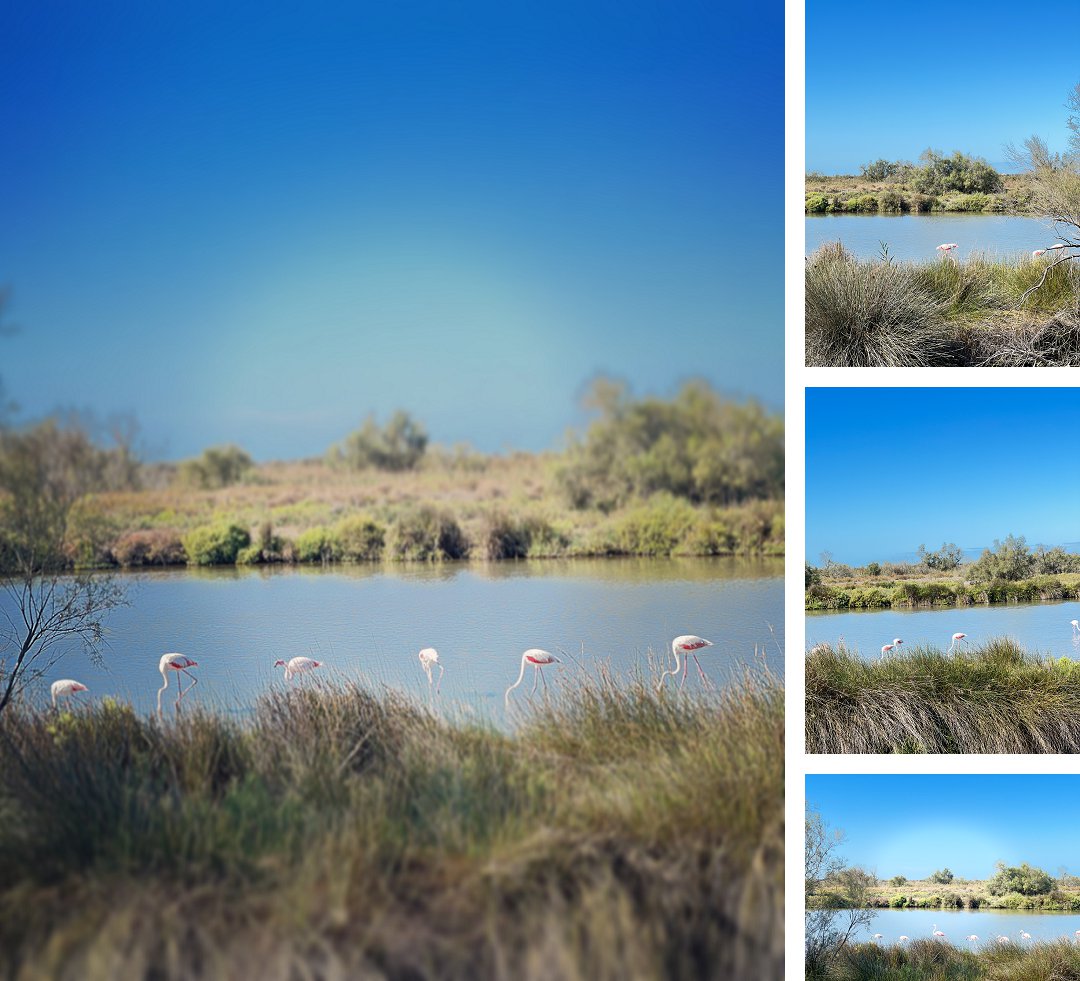
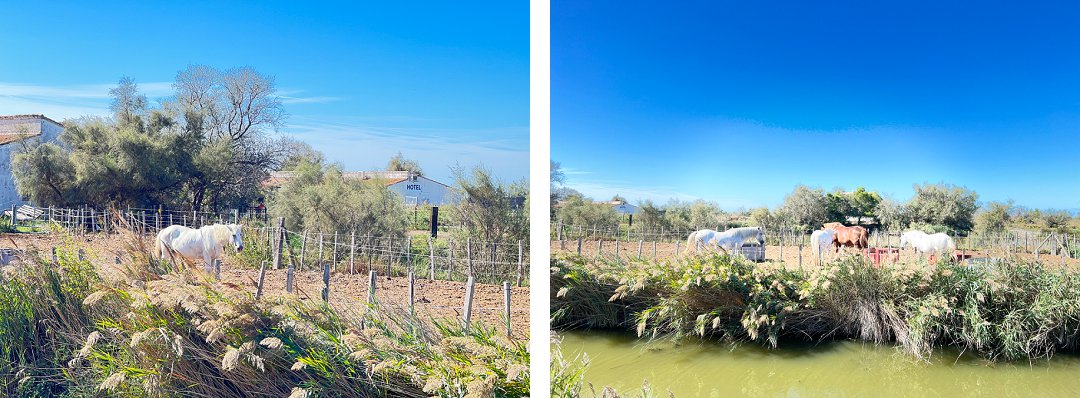
I suppose I hadn’t really expected to find actual towns in this area – I always imagined it was all dunes and marshlands and expansive beaches with rolling waves – but we saw on Google Maps, a church, right on the edge of a headland and decided to explore further, discovering the town of Les Saintes-Maries-de-la-Mer. This beautiful French town owes its name to Saint Mary of Jacob and Saint Mary Salome who, with their servant Sara, are believed to have crossed the sea from Palestine on a boat with no sails or oars. After landing here, the three close followers of Jesus then started spreading the Christian faith, and every year in May, a great pilgrimage of Romani people from all over Europe leads them here to pay homage to their patron saint Sara. We had absolutely no idea that this town existed, but it’s clearly a destination, not only for pilgrims, for tourists, judging by the number of restaurants, bars, independent shops, gorgeous houses converted into accommodation and an arena. Where the bulls are kings, and some are specifically bred for the course camarguaise – Camargue style of bull-fighting. Only here, the bulls are never killed. These bulls are confronted with raseteurs – Camargue bullfighters – who try to remove the ribbon that has been attached between its horns with strings. The bulls are considered so important, that when they die (not from the fights, as they are not killed in the ring), they are often buried in the marshes, and villages erect statues to them. Every self-respecting Camargue village has its bull statue. Just like Saintes-Maries-de-la-Mer.
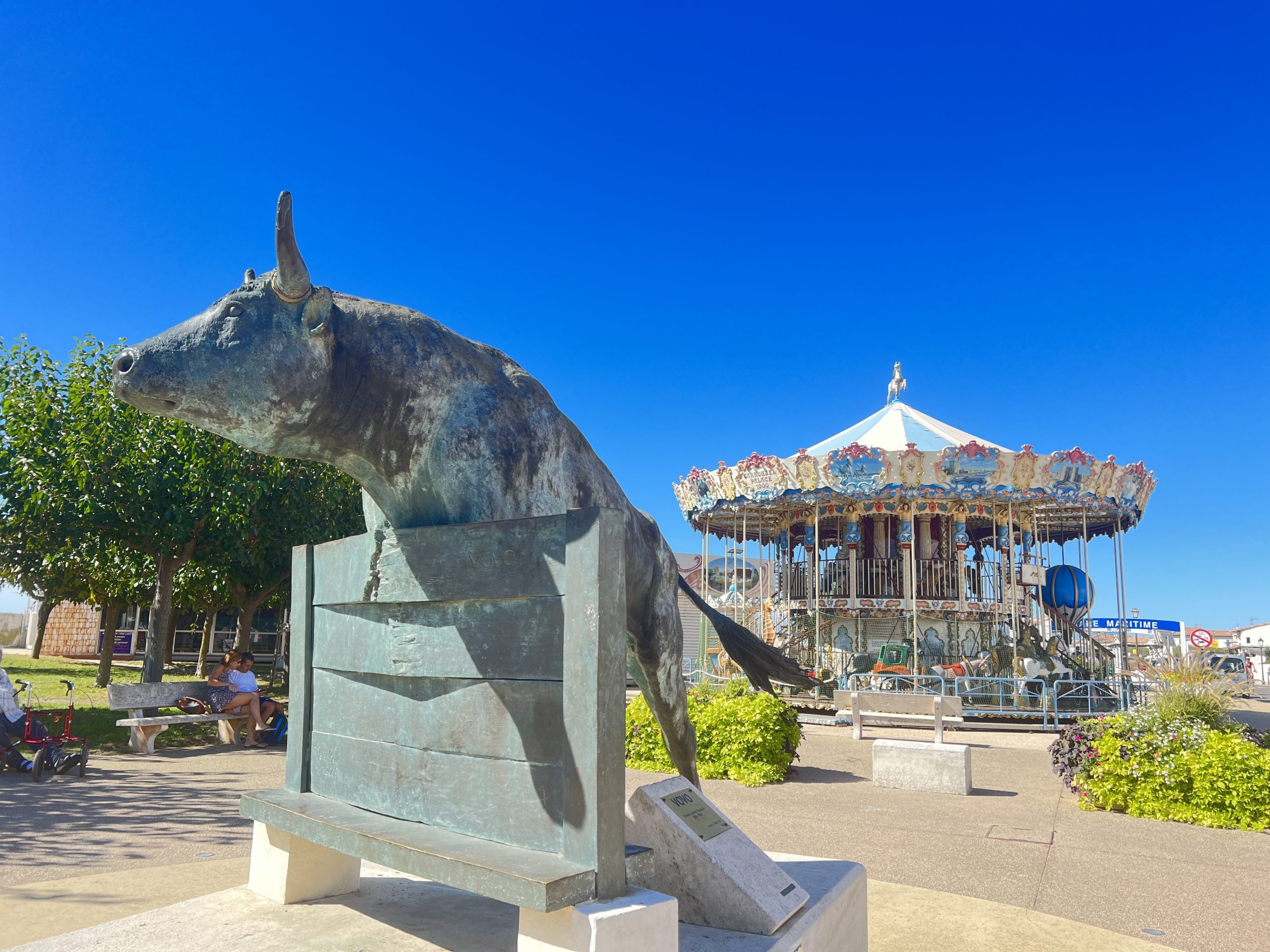
The town is a perfect seaside town – lots of winding alley ways and roads, packed with the most stylish and elegant eateries and shops, all within walking distance of the imposing church. Horses and flamingoes aren’t in evidence here, but swanky yachts and fishing boats and smaller yachts jostle for space in the harbour. It’s a shame that we couldn’t stay overnight, as we were on a tight schedule, but if we are ever in the South of France again – and we’ve decided that relocating here isn’t an option for us, but holidays most definitely are – we’ll certainly bookmark this wonderful town and explore the Camargue properly.
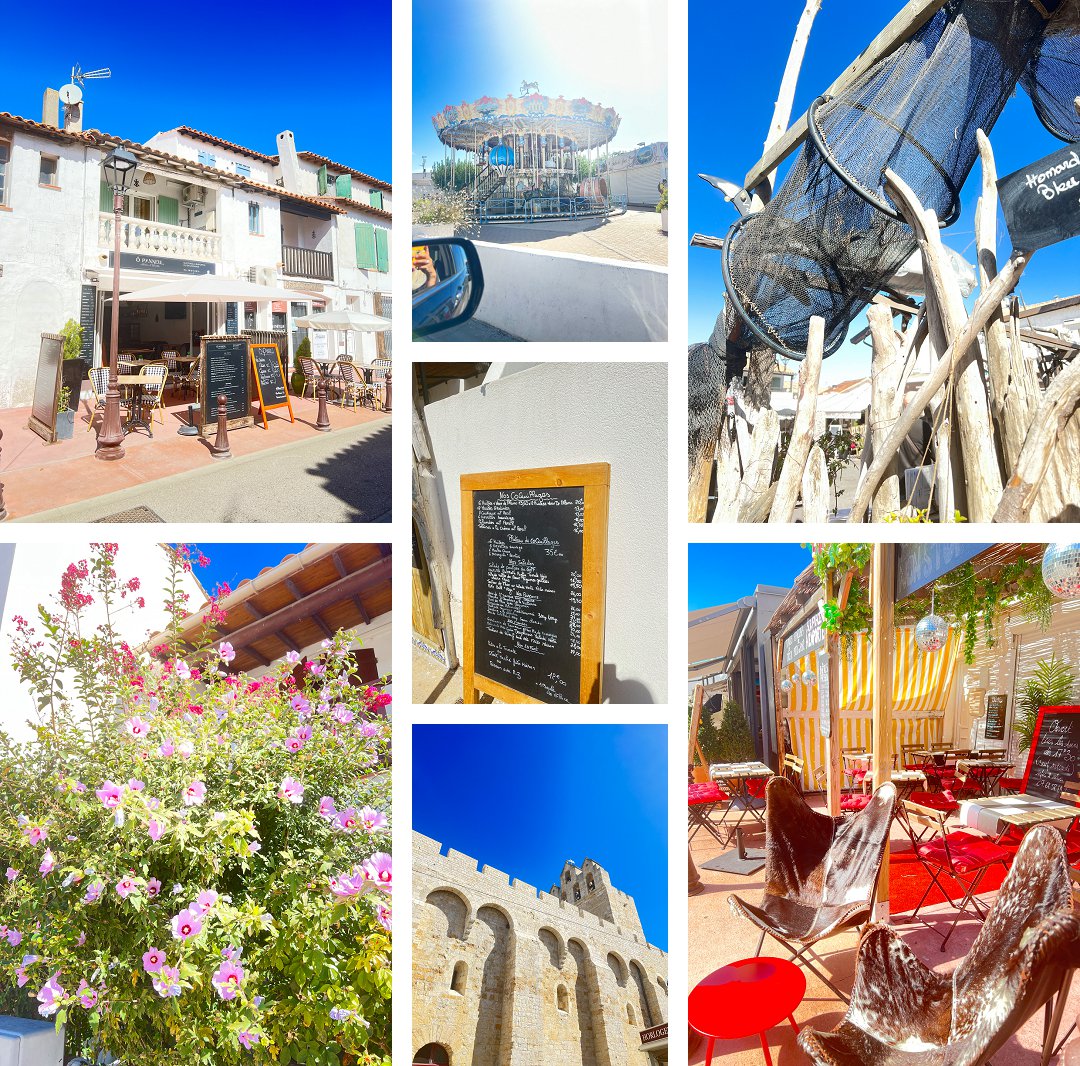
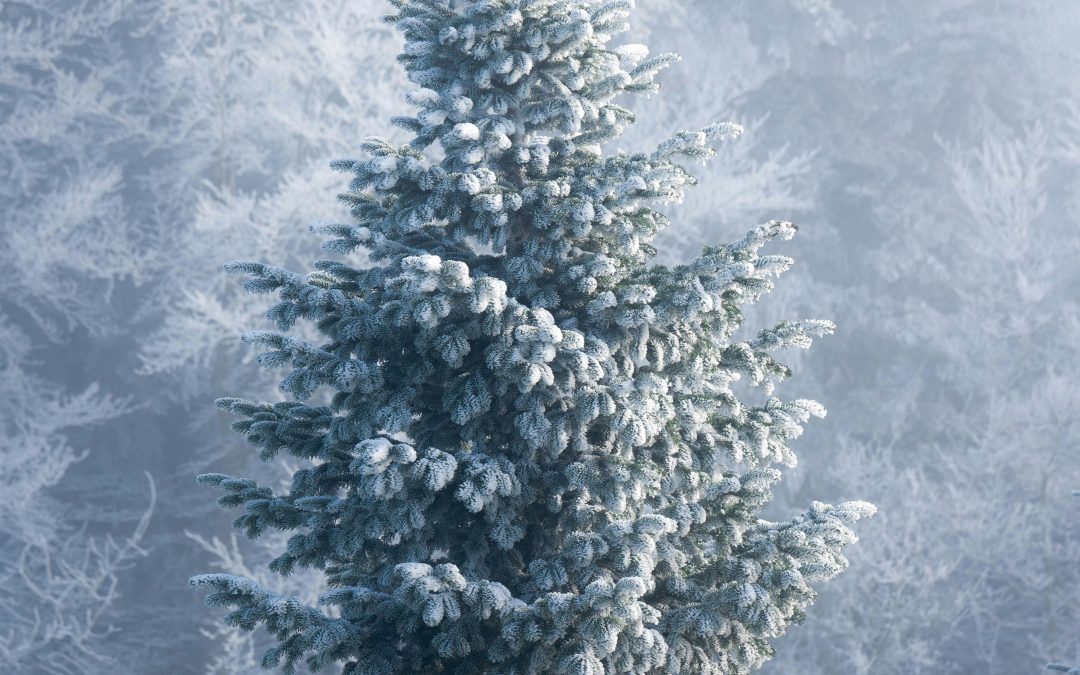
by Helen | Nov 28, 2023 | Lifestyle
Summer this year, seemed to last way into October. We had two lots of friends stay with us over this month, and both times, we were able to sit out in the garden and soak up the sun, as well as eat outdoors. Even into November, it’s been mild – and we can evidence this by the fact that the log store, filled up about a month ago, is still full. However, a chill has now started to creep in. The summer duvet has finally been washed and put away until next year, replaced by a goose feather and down duvet. The underfloor heating has gone back on in the bathroom and kitchen. We’re lighting more candles, earlier, to get that gorgeous evening glow. And, the log baskets in the two living rooms have been filled, as we light the first fires of the season.
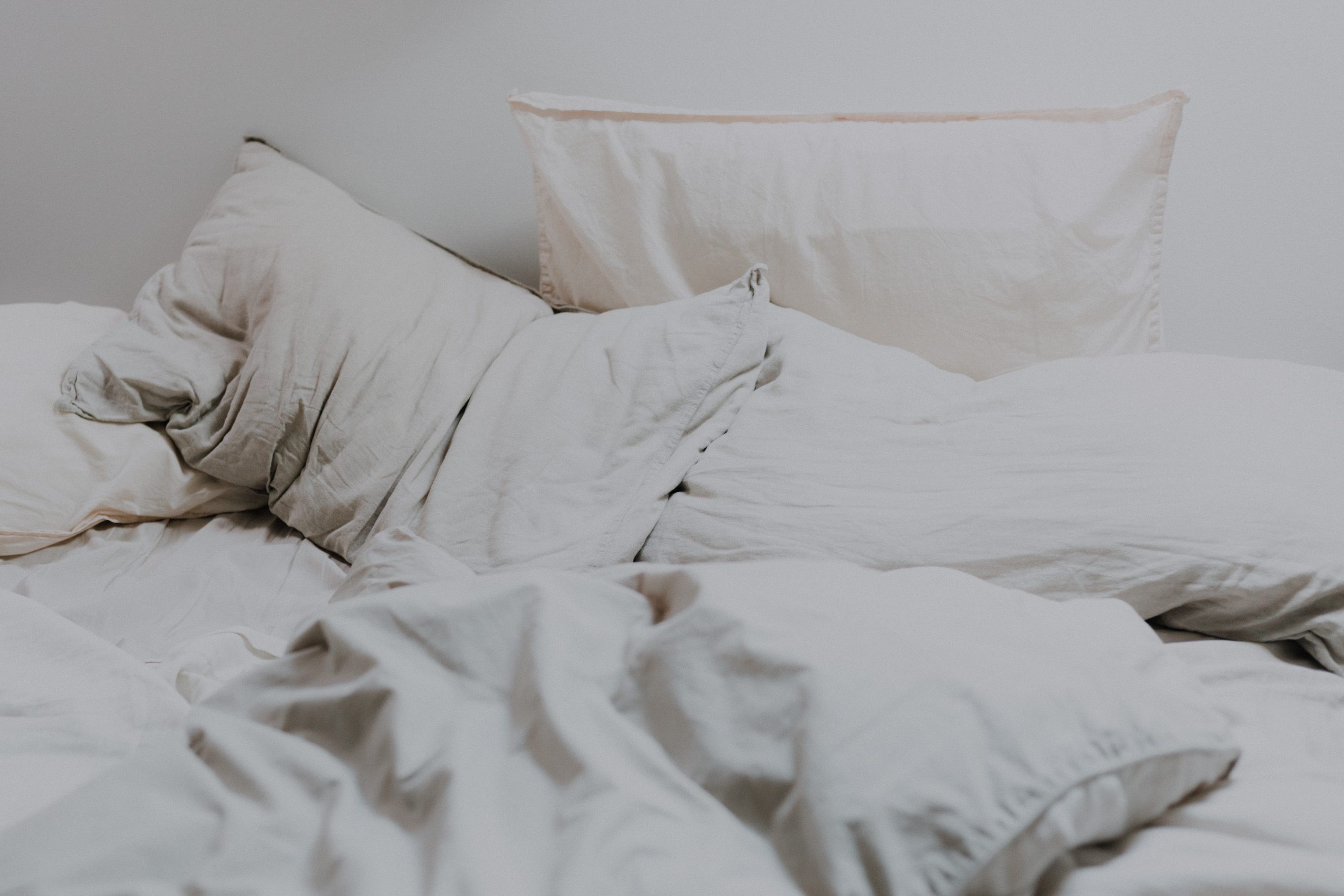
The garden furniture has now all been cleaned and packed away, wrapped up tightly in waterproof covers, until the spring. The garden has been cleared of leaves, all added to the compost pile. Terracotta pots, which aren’t being used, have been cleaned out and stored, to keep them free from the frosts, which we know will come soon. But this winter, even with things being stored away, the gardens at the front and rear of the house. are going be very different from previous years.
Previously, once winter has set in, the door would be closed and we wouldn’t really venture into the garden. We only had one, until recently, because the rear of the house was still un-renovated. But, after all of our work this year, we now have two beautiful gardens, both covered in white stones and both with plants which won’t drop over the winter – bay trees, olive trees and bamboos. So, we’re going to do things a little differently this winter. We’re going to enjoy the great outdoors – however cold it is!
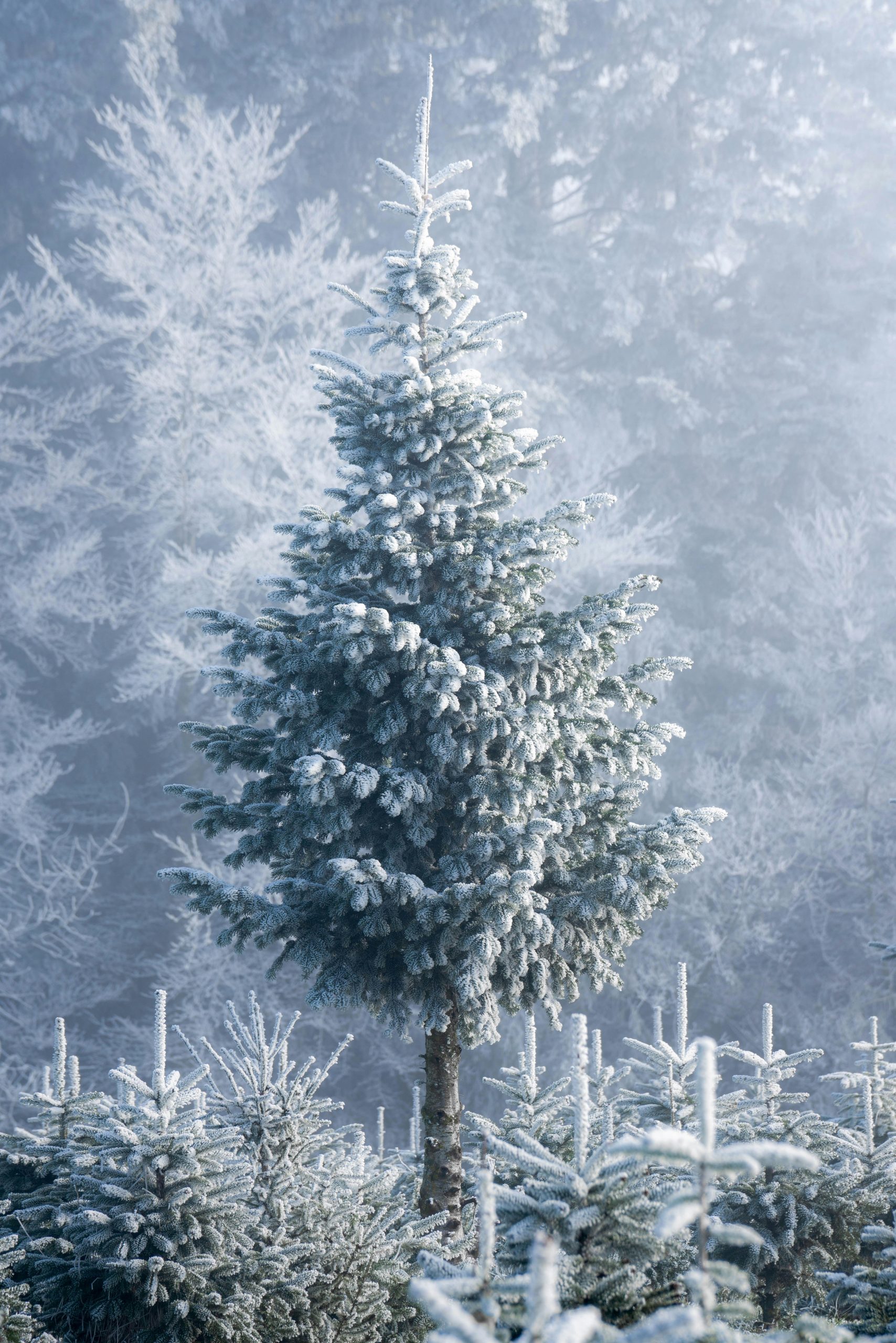
Luckily, it’s not quite this cold, just yet. But when it is, we’re going to be prepared – and this weekend, we gave the new fire-bowl, its first run out. We bought it over the summer, imagining we’d be lighting it on chilly evenings. Fat chance of that, as most of the summer was so hot, the thought of a fire in the garden, was just ridiculous. So, we think it’ll come into its own over the winter. Now that the Well Room cupboard is also winter-ready, filled with warm coats, scarves, hats and boots and we have a big basket by the door, full of soft, furry throws, we think we might be well set up.
Camping chairs came out on Sunday afternoon, when the sun had disappeared from the rear garden and the fire lit. We spent a good two or three hours, in the garden, building up the fire – and very decadently, drinking home made Prosecco, given to us by our Italian neighbour. It just seemed right to christen the winter garden, with a bit of a fizz. We also chose a day when the sky was so clear, and so we could see the massive, almost-full moon, rise up behind the campanile in the village. It was really, really lovely to do this – and we will most definitely be getting out in the garden again, when we have crisp and sunny conditions.
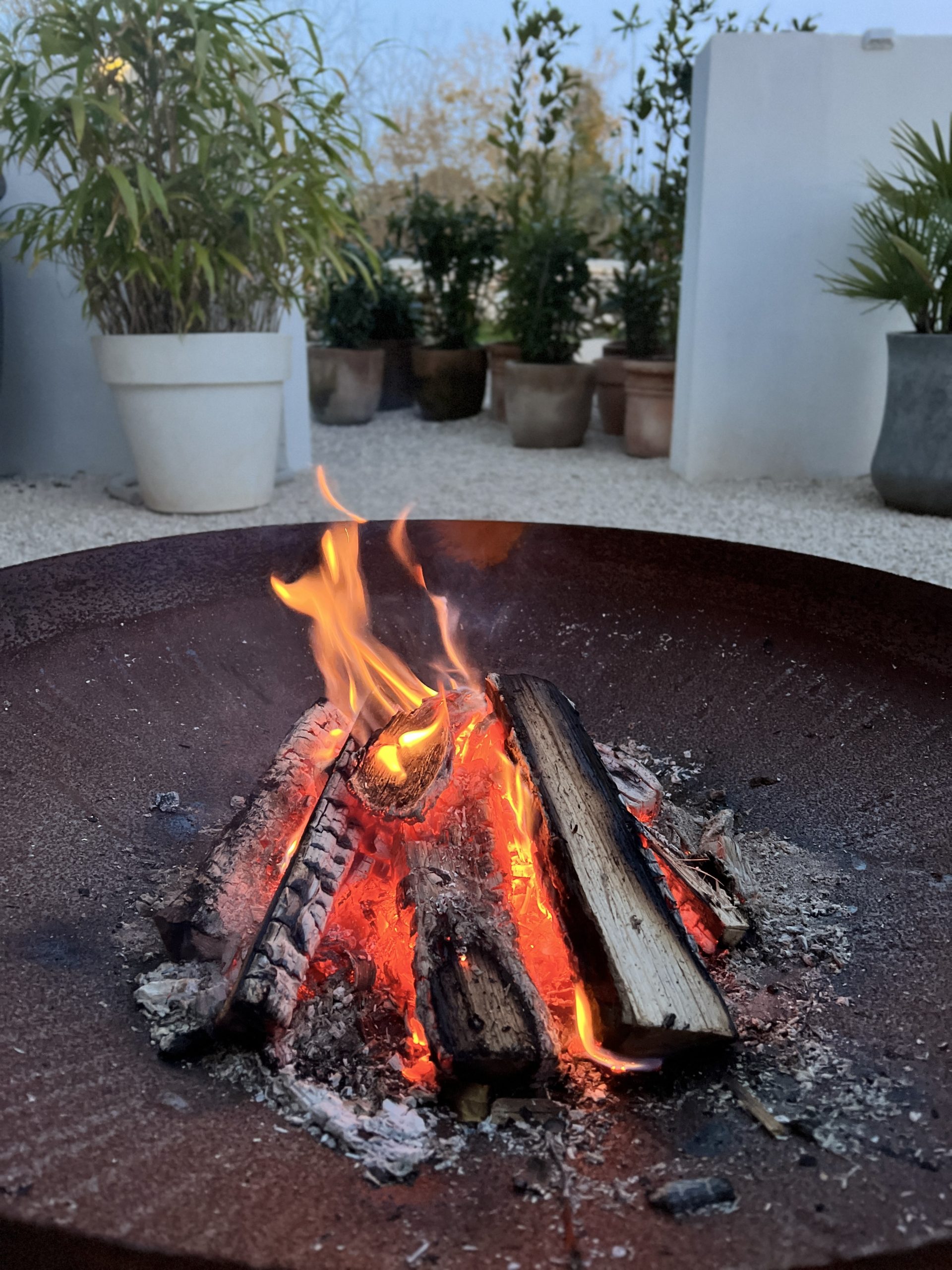
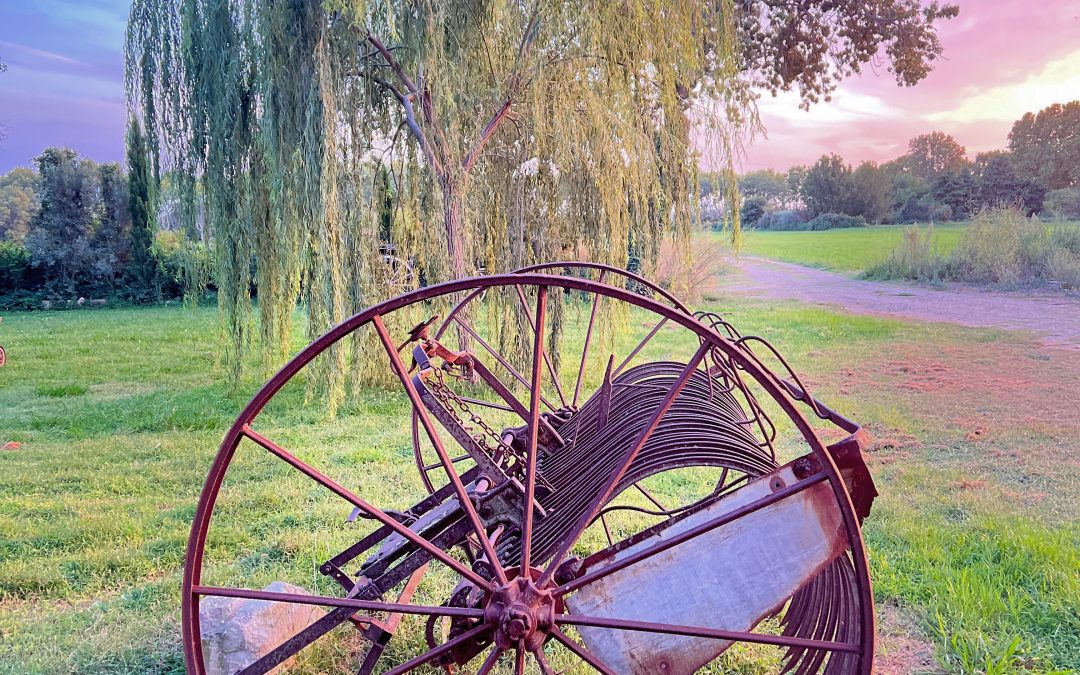
by Helen | Nov 19, 2023 | France, Travel
We’d never been to Arles before, a city on the Rhône River in the Provence region of southern France. It’s famed for inspiring the paintings of Van Gogh, and was once a provincial capital of ancient Rome, known for many remains from that era, including Arles Amphitheatre. On our recent road trip, to south eastern France, we decided to stop off in the city and have a night’s stay. But, as so often happens when you’re booking on the go, and having to make quick decisions, what we booked was a little further out, than we had wanted. However, we were captivated by the photos online of B&B Maison d’Hôte Mas d’Emyard and the reviews, so even though it was about 5kms outside of the city, we booked it.
The road to the Chambre d’Hôte runs through very pretty countryside, with a little village just before the turn off for the B&B, with a couple of boulangeries and bars, with balconied and shuttered rustic houses. We found out that the B&B does not currently offer evening meals, so we had taken snacks enough to see us through an evening, but this village might present an option or two, if you didn’t fancy going into Arles in the evening. The B&B itself, is part of a working farm estate and so feels quite deep in the countryside. A very narrow bridge takes you over a small culvert and onto the estate – something to be aware of if you’re travelling in a wide vehicle, as our Honda CRV just about got through.
There are lots of outbuildings, which are in differing states of repair and renovation, with tractors and farm machinery. This could look awful, but because the rest of the estate is so well maintained and pretty, it just adds to its French charm. A large car-park is available, at no charge, and judging by its size, I guess this place an get quite busy in high season, but as we were there early mid-September, it was pretty much empty. In fact, even though the weather was still lovely and warm, there was definitely an end-of-season feel. However, we weren’t the only guests, the grounds are lovely to walk around, we had wine and we had a beautiful sunset.
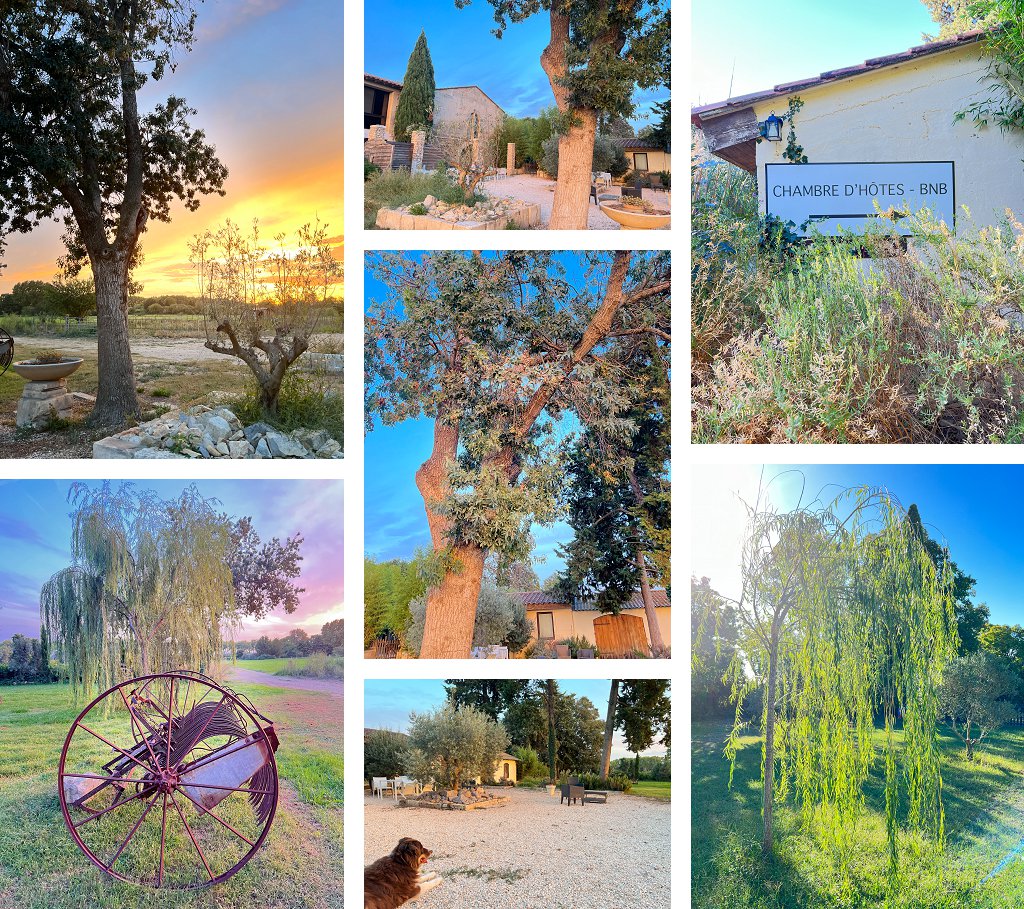
Our room was exactly what you’d expect from a French B&B – rustic, vintage style furniture, chalk paint, and lots of prettiness. The en-suite bathroom was small but perfectly equipped with a powerful walk-in shower and a stone basin. Perhaps the highlight of this room, was the arched windows with views across the terrace to the fields beyond.
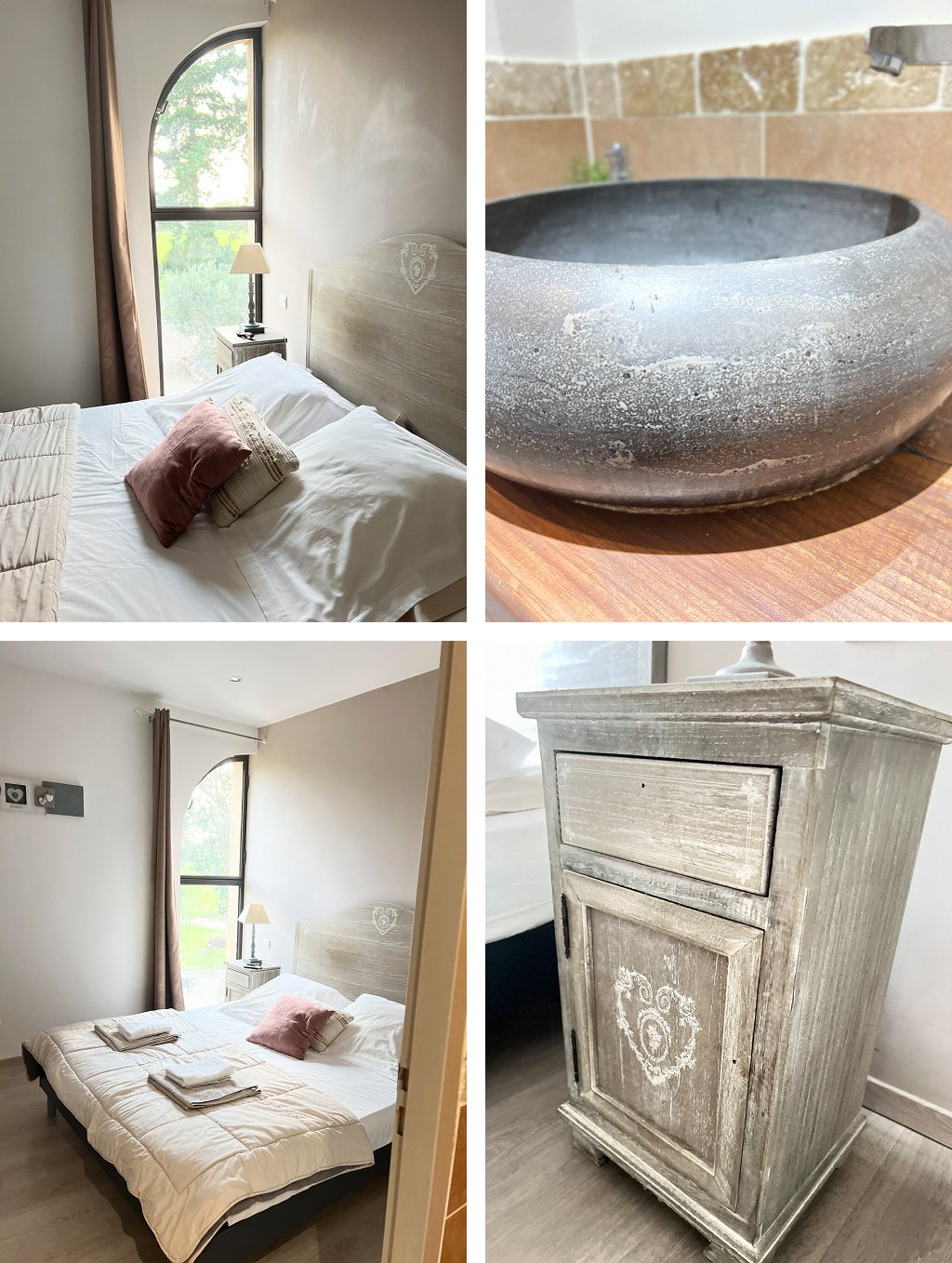
Breakfast was a very French affair, which could be taken outdoors on the terrace or indoors, in the large dining/living room with an open kitchen, French doors, very squishy looking sofas and an elegant wood burner. Even though we stayed in September, it was definitely warm enough to eat outdoors, but it was that time of year when the wasps were on thir last look out for sweet treats on a table, so we did retreat indoors. A small buffet selection was available – French bread, croissants, jams and coffee, but also by request, you could have ham, scrambled eggs and cheese, at no additional cost.
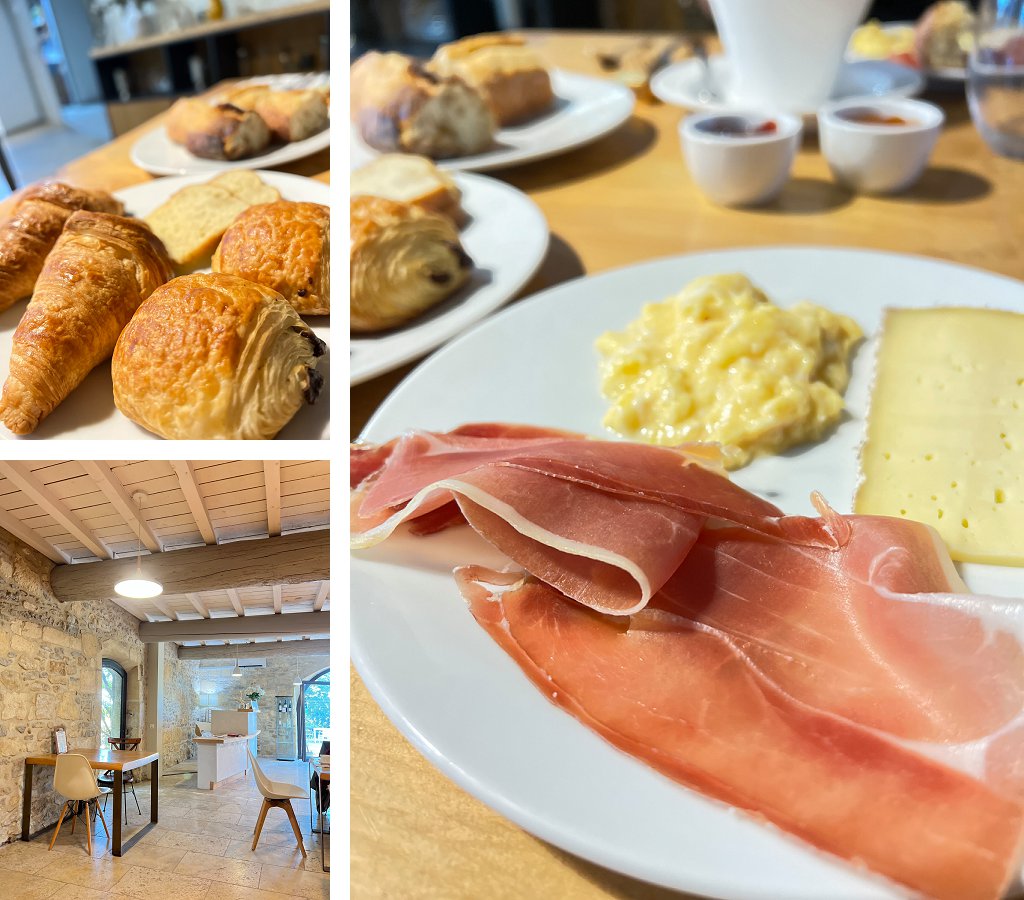
Before we left, we investigated the grounds a little more. Away from the B&B, and the main house (where the owners live), is a fenced off swimming pool and sun loungers, set in the middle of a lawn, surrounded by weeping willow trees. Again, we were there right at the end of the season, and although the pool was still open the morning air was just a bit too chilly to even think about taking a dip. However, in the summer, this would be the perfect place for a dip.
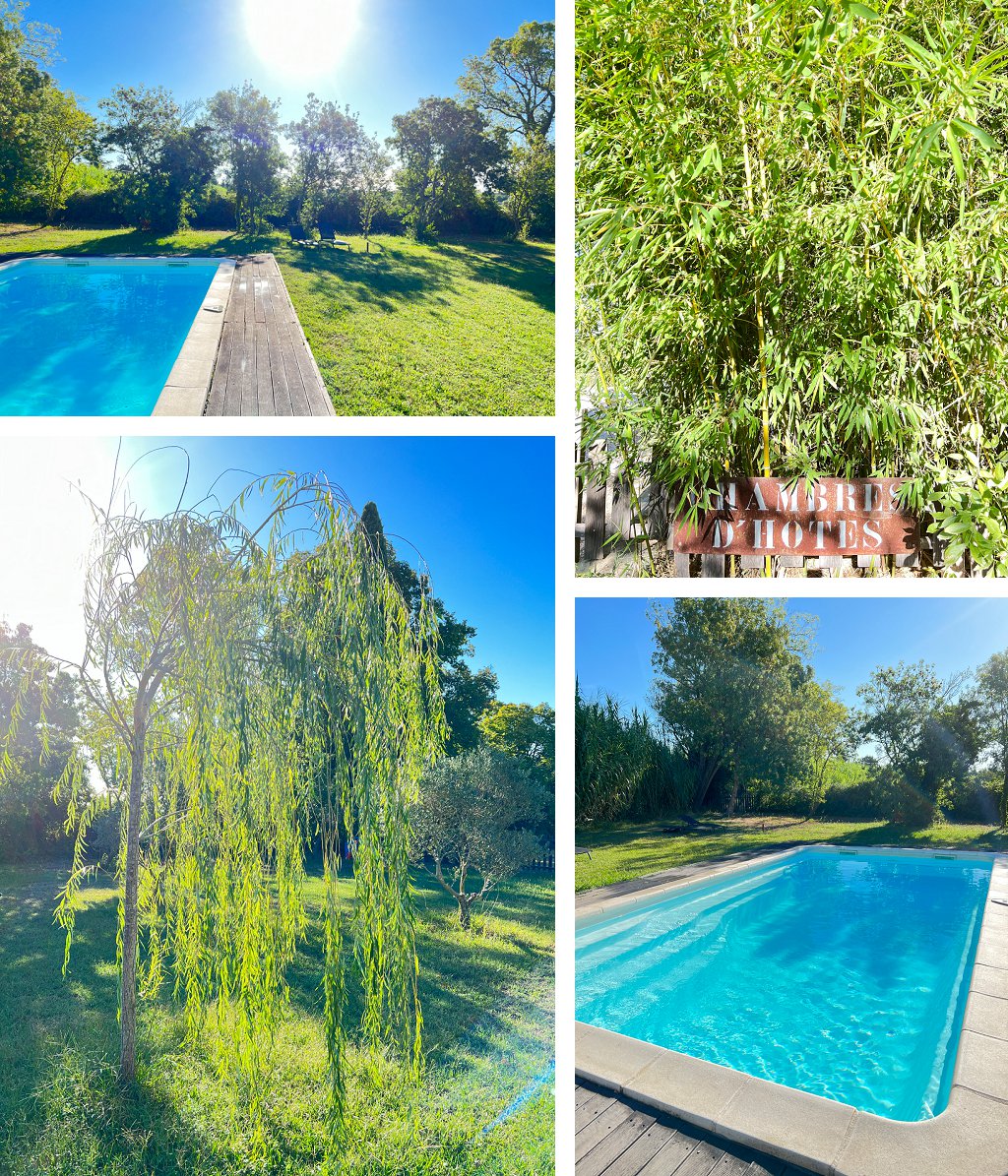
With lots of greenery, including very tall. bamboos and weeping willows, the gardens very private. The actual B&B is a renovated stone property, set away from the main house, with a large sun terrace, and with only five or six rooms, it has a very private feel – even when fully booked I can’t imagine you’d feel you were sharing the space with lots of people. We thoroughly enjoyed our stay here, and although it’s unlikely we’ll ever revisit, it’s somewhere, in the French countryside, that we will remember.
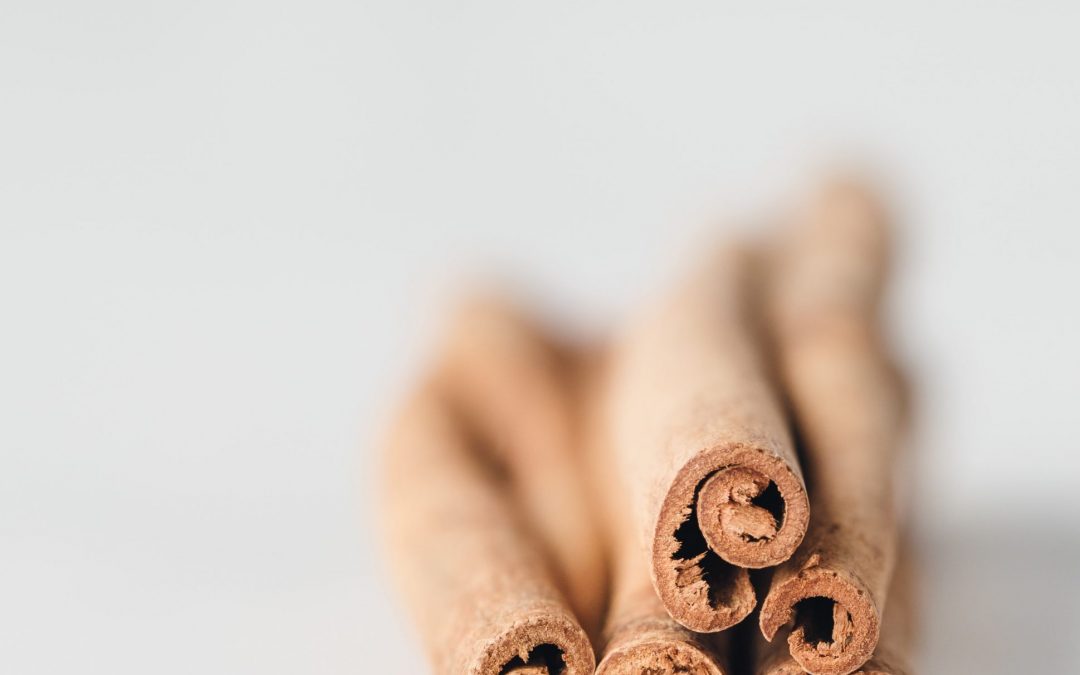
by Helen | Nov 19, 2023 | Lifestyle
I am not a baker. Not by any stretch of the imagination. I can cook. I can follow a recipe, sometimes go a bit off-piste, and I’m definitely OK with one-pot stews and soups and casseroles. But baking. As in cakes that go in the oven – I prefer to leave these to these experts, as they always just seem so complicated and so full of ingredients, which, in their raw state, leave me a bit puzzled. Too many kinds of flour and sugar and too many ways to mix mixtures. Especially when you are trying to buy in either an Italian or a Croatian supermarket and re reliant on translation apps for the ingredients.
But that was until we were given this as a present…
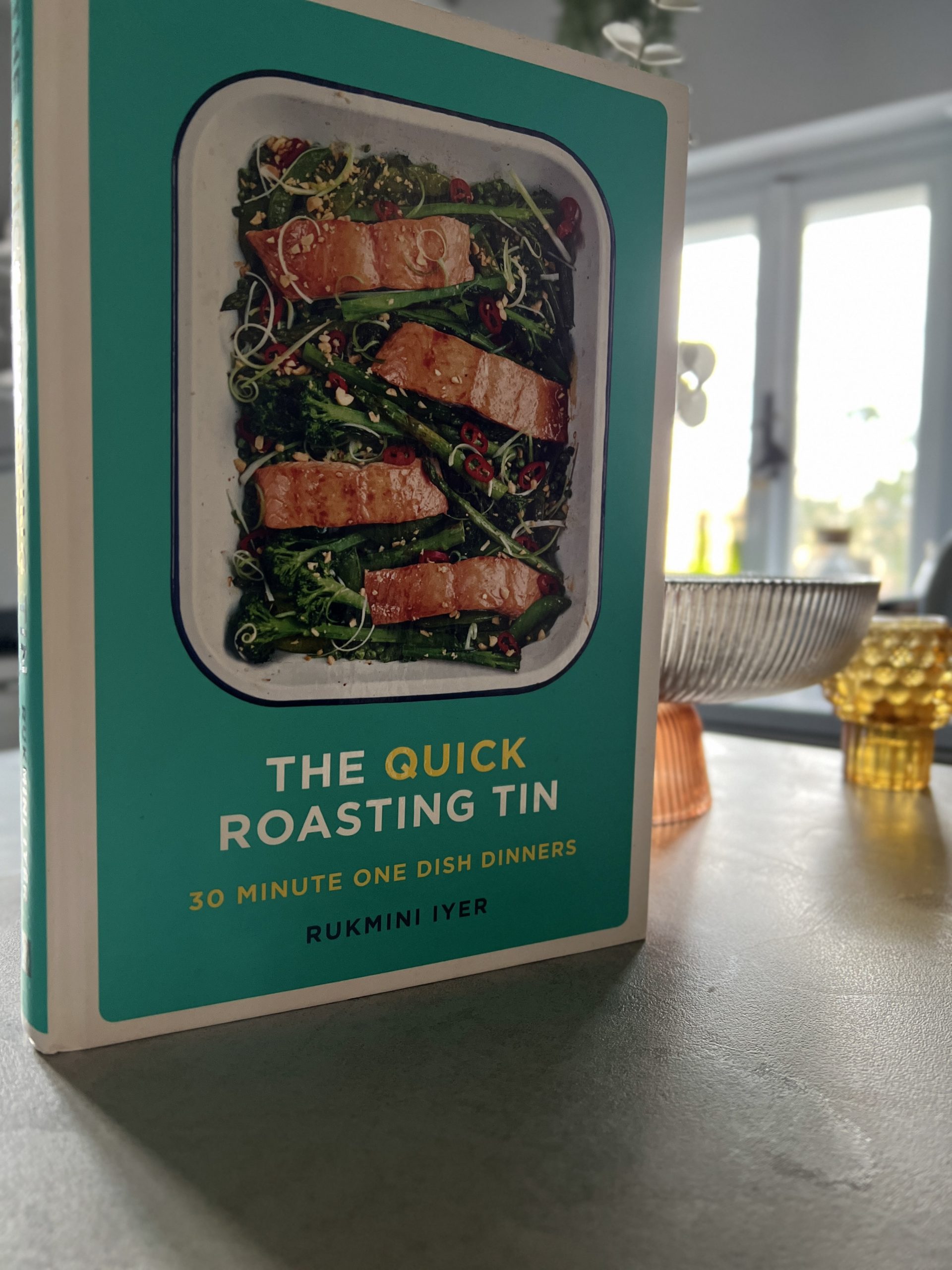
…a book, full of recipes, all of which are done in one tin. One roasting tin. Utterly genius! A fair few have been tried and tested but I’ve tended to avoid the back section – the cakes and desserts. These pages in any recipe book I own, rarely have splogdes of cooking evidence on them as I don’t venture near the back of the books. But I decided to be brave and tackle what looked looked like a fairly easy recipe – an apple crumble. With all ingredients sourced – and not easy, I can tell you, when buying in a Croatian or an Italian supermarket – I set about Operation Crumble.
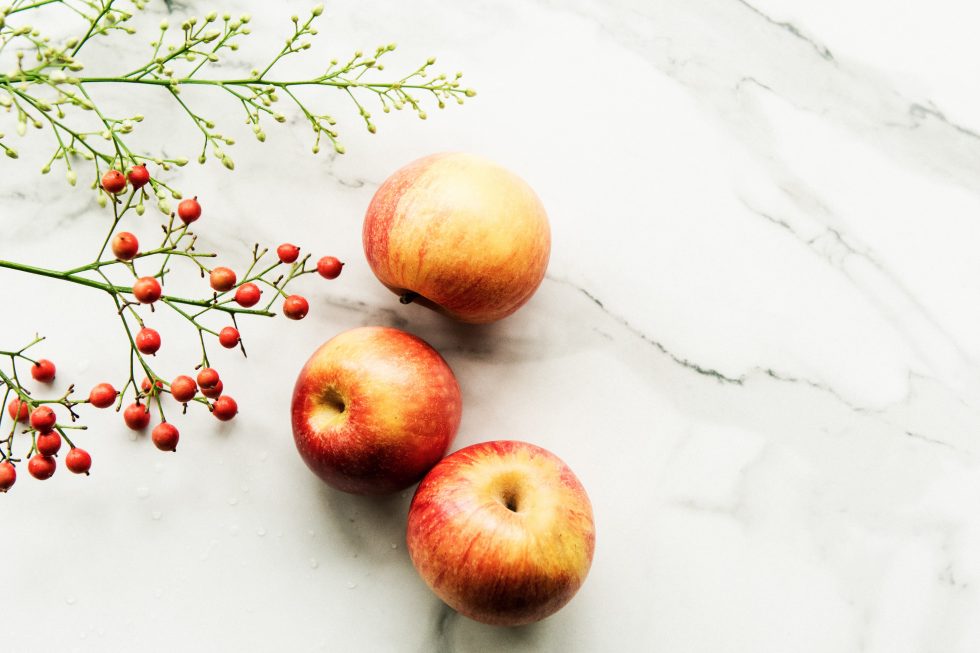
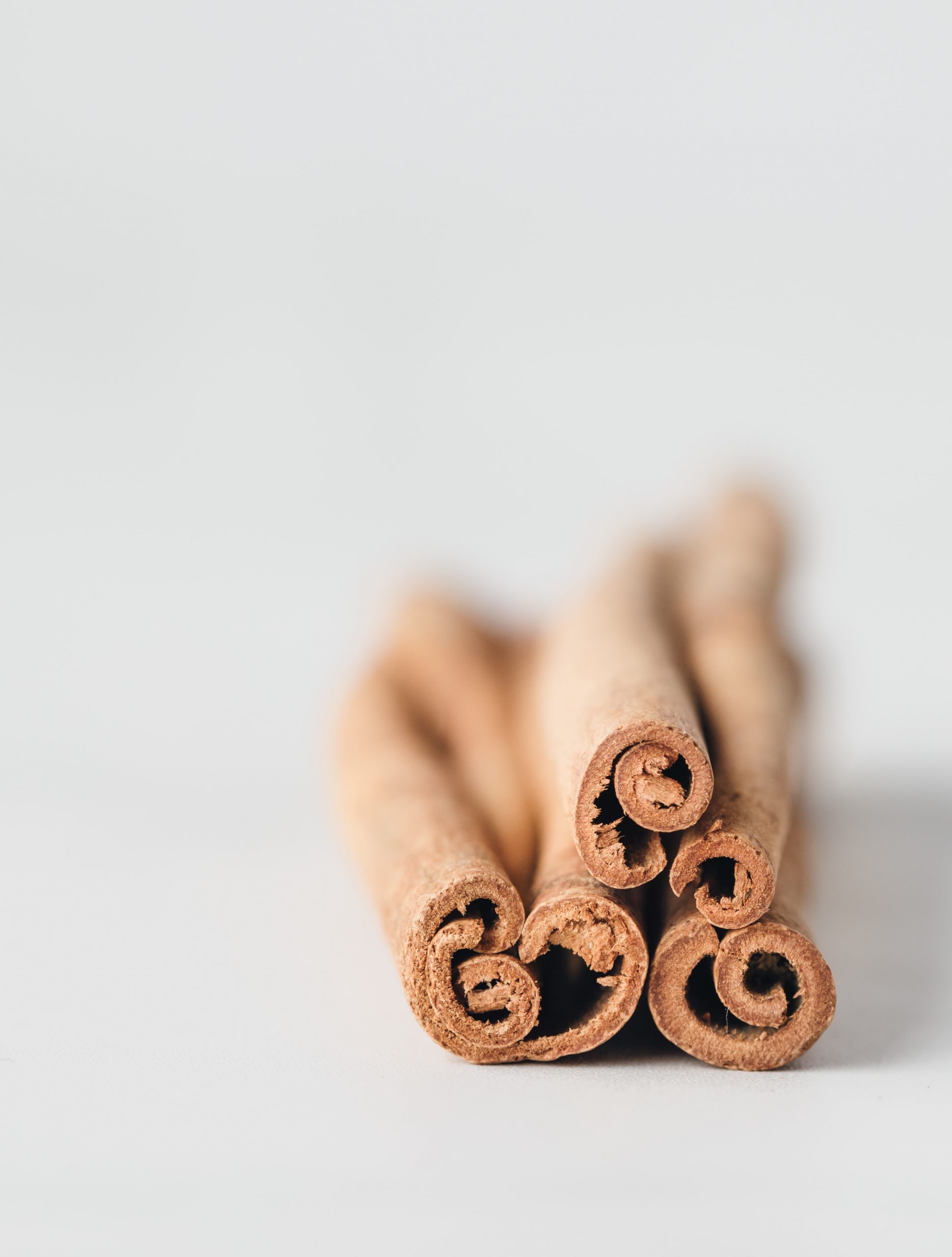
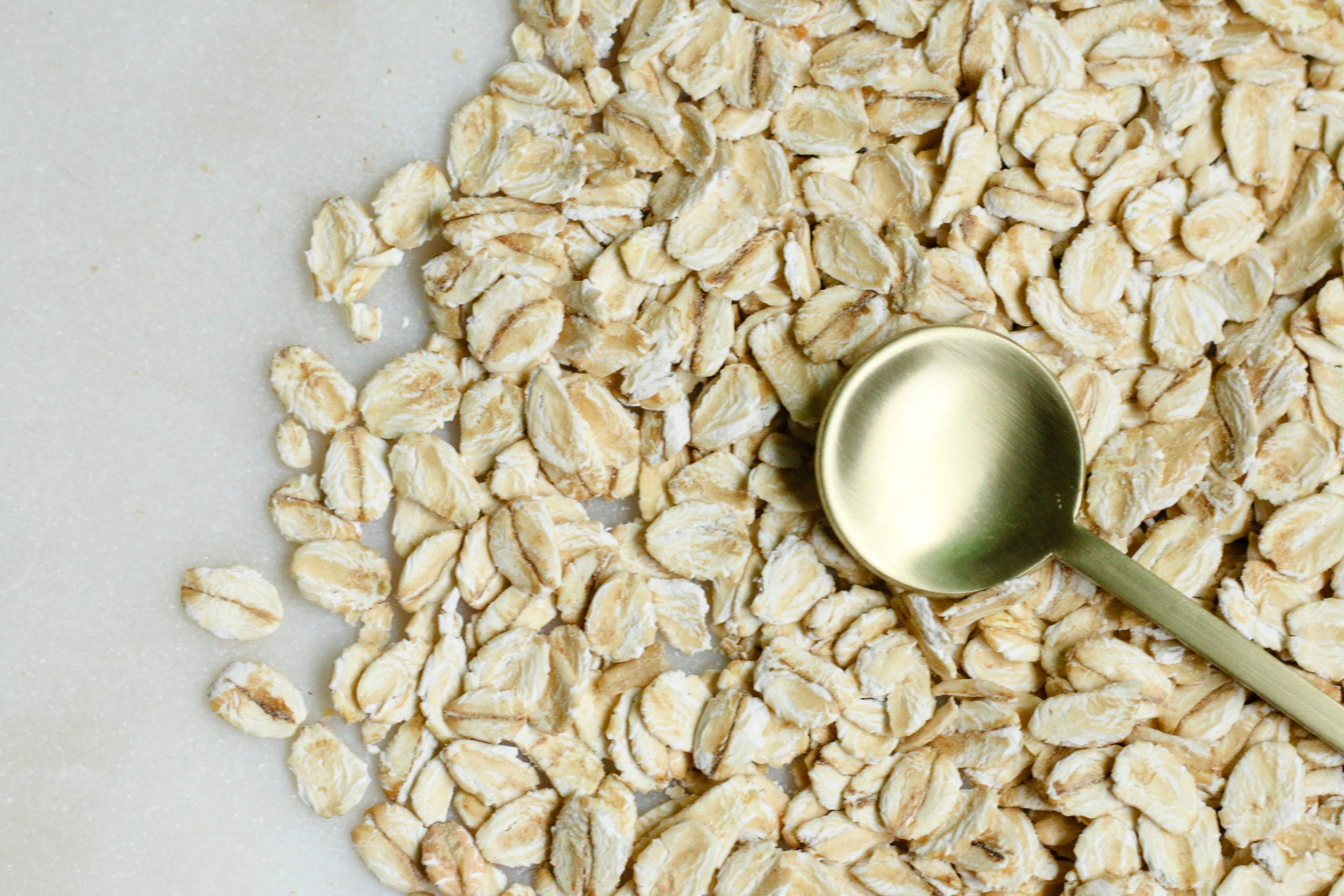
what you’ll need : cake
3 apples core and sliced
Juice of half a lemon
225g softened, unsalted butter
225g soft, light brown sugar
4 free range eggs
225g self-raising flour
half teaspoon of baking powder
1 teaspoon of ground all-spice
1 heaped teaspoon of cinnamon (or, if you’re like me, a very heaped tsp)
what you’ll need : crumble
25g demerera sugar (soft brown sugar can be used as an alternative)
25g unsalted softened butter
25g plain flour
25g oats
what you’ll need to do
Pre-heat oven to 180 (fan) / 200 / gas mark 6.
I find it easier to get all of the ingredients measured out first, so that I’m not continually stopping and starting and so that I can keep the work top – which isn’t massive in size – as clutter free as possible. The process is pretty simple and straightforward – I use an electric whisk too, to mix everything, as even with softened butter, it is a bit tedious doing it all by hand. So, whisk the butter and sugar until smooth and then whisk in the eggs one by one. Gradually stir in the flour, spices and baking powder until all combined.
Line the tin with grease proof baking paper and spoon in the mixture. I leave coring and slicing the apples until this point so that they don’t start to turn to brown and overlap them on top of the mixture, adding the dash of lemon juice to again prevent browning.
Now beat the demerera (or soft light brown) sugar and butter together, then stir in the flour and oats and work together with your fingertips into a rough crumble. Scatter over the apples.
Bake in the oven for 35-40 minutes, until the topping is golden brown and a skewer inserted into the cake comes out clean. Leave it to cool on a wire rack and the serve as you prefer – with a cup of tea, a dollop of cream or creme fraiche, or as we did because we had it in the freezer, a nice big spoonful of Bailey’s ice-cream.
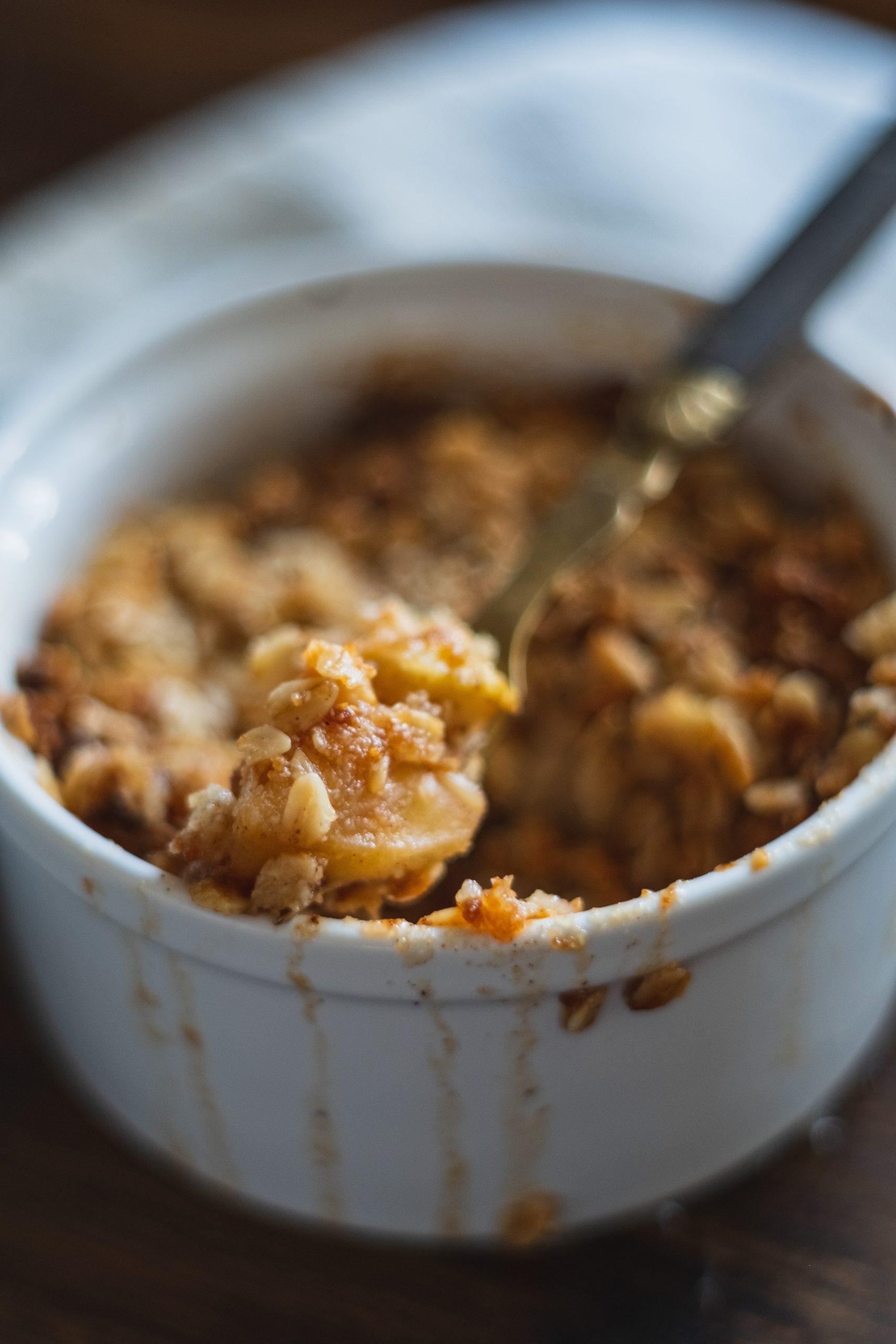

by Helen | Nov 17, 2023 | Lifestyle
We’ve come a long way since we moved to Istria, in being able to satisfy our spice cravings. There’s still nothing – quite – on our doorstep, as we used to have on Burton Road in West Didsbury, but compared to the early days, we’re practically living on Spice Island now!

We now place regular post-Brexit orders with British Cornershop, who now have a Netherlands distribution centre, meaning we’re not subject to UK taxes, and that means we can easily stock up on store cupboard spices that we can’t easily get here. However, even the spice search has become easier as we extend our shopping trips to Italy – and recently, even France. So making curries at home has been a regular thing, and we are becoming a bit of a dab hand at them, so we can satisfy our cravings much more easily. We’ve also started to discover restaurants where we can get our takeaways from – when we’re in Trieste, we have a good few options for Indian/Nepalese food and every time we visit Ljubljana we bring a takeaway back from Namaste, our favourite Nepalese restaurant. But just recently, we’ve made two FANTASTIC discoveries, very close to home – one which we can only do over the summer months, the other – a real game changer – we can do ALL YEAR ROUND.
artegnana 1798 : grožnjan : istria
This refurbished boutique hotel in the pretty town of Grožnjan, about 8kms away, took us by surprise over the summer. We visited the town to go the antiques market and decided to have a bite to eat on the terrace of the little hotel. As well as Istrian and Italian inspired charcuterie and pasta dishes, we spotted a few Thai influenced dishes, including Chicken Satay. Which we’ve not had for a very long time. The waiter explained that he and his colleagues are from Indonesia, working for the season, across the hotel – and bringing with them Indonesian inspired dishes. We were sold and immediately ordered the satay skewers. The kitchen, for non-diners is only to 5pm, which was a bit gutting as we had friends arriving from Manchester the following week and we knew they would love the additions to the new. However, we were told we could order the food as takeaways and heat up at home – which is exactly what we did when our guests came to stay.
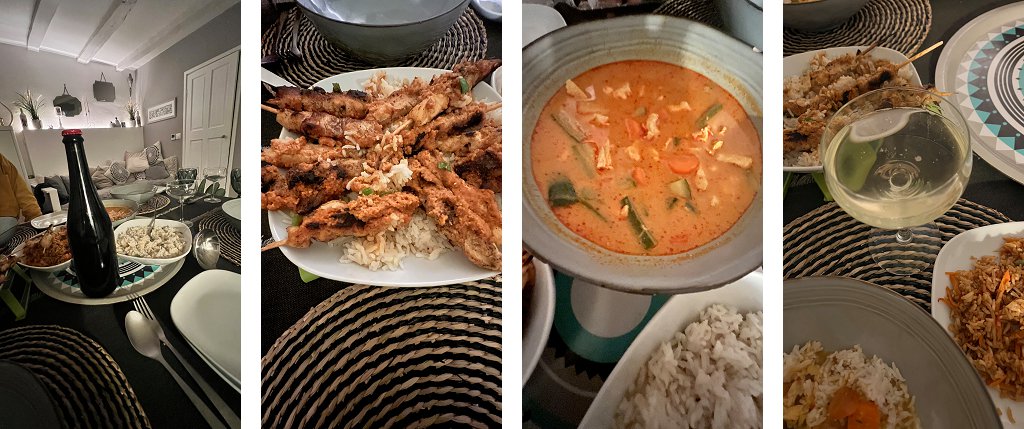
The lovely staff have returned to Indonesia for the winter, and the hotel has closed – and they will all be back in the spring, so we are told. But we were gutted, having only just found this, to realise we wouldn’t have this over the winter.
chada thai restaurant : koper
Until I discovered Chada Thai restaurant in Koper. The town, in Slovenia, we go to at least two or three times a months, had a Thai restaurant, which obviously we had to investigate! And, having done so, on a couple of occasions now, we feel that another piece of the jigsaw has been added and our lives are becoming more and more normal…

Even before eating the food, we were impressed, as nearly all of the packaging was recyclable – a big plus point. Only the lids for the curries were plastic, and we could forgive this as otherwise, they’d have been a bit of a mess by the time we got them home. So, the taste test…

Very fresh, very tasty and very spicy. Unfortunately, I can’t recall the name of my dish, but it was packed full of the leanest chicken, with crunchy vegetables and a very fragrant, coconut broth. The other dish was a Green Thai Curry, with extra spice – and yes. It was very spicy! Definitely blew away the cobwebs. The starters were all delicious – vegetable spring rolls, fish cakes and chicken satay skewers.
With Thai/Slovenian owners, this restaurant is the real deal, making authentic dishes – not dishes which are a bit westernised. Utterly gorgeous – and I think we’ll be revisiting Chada quite a lot, especially over the winter.






























































